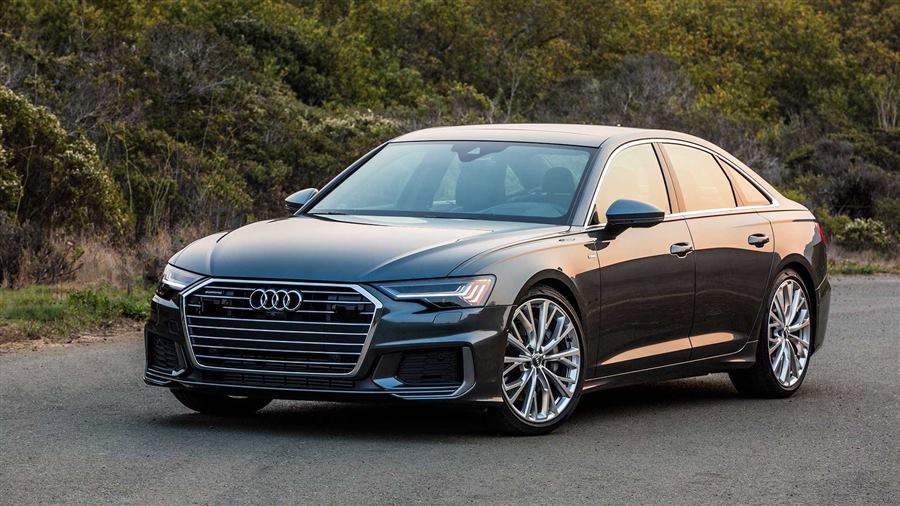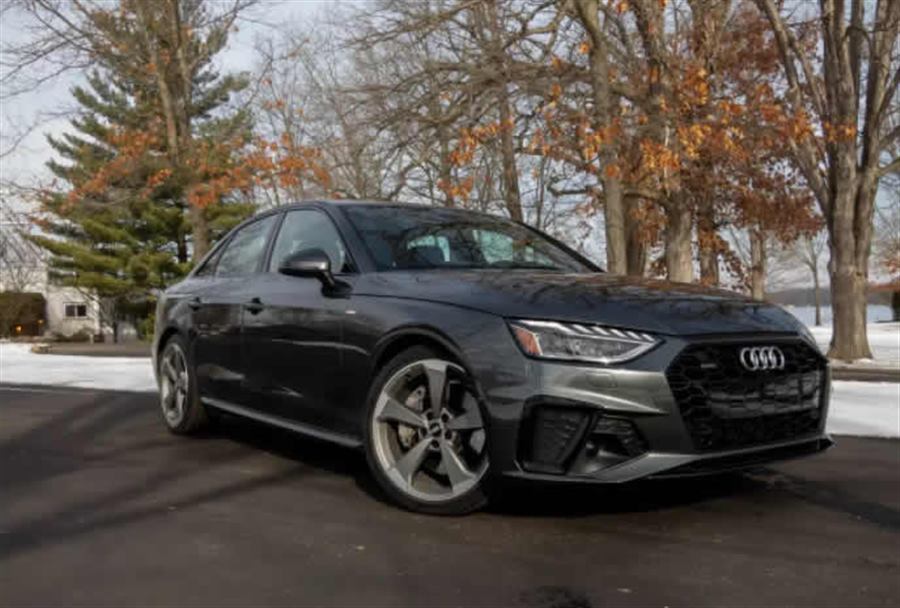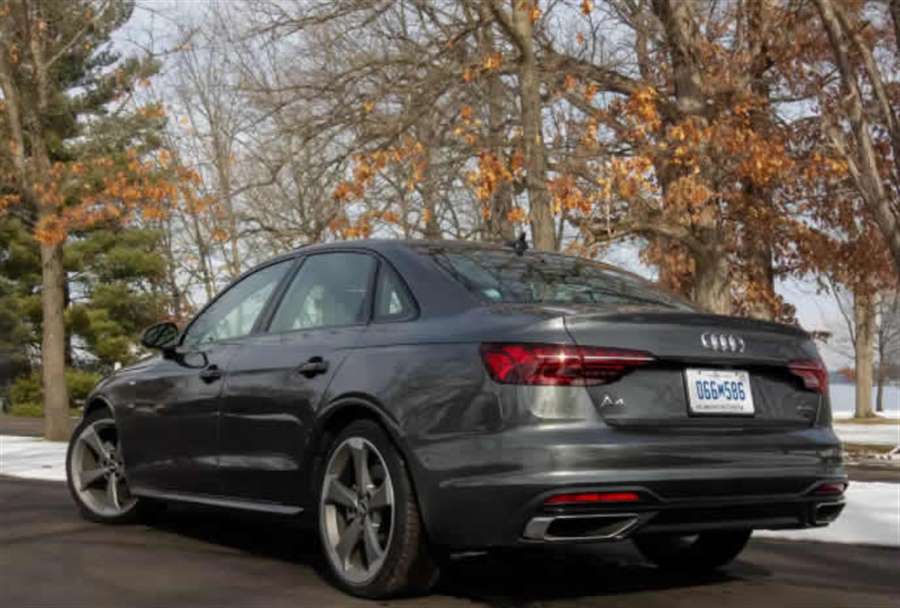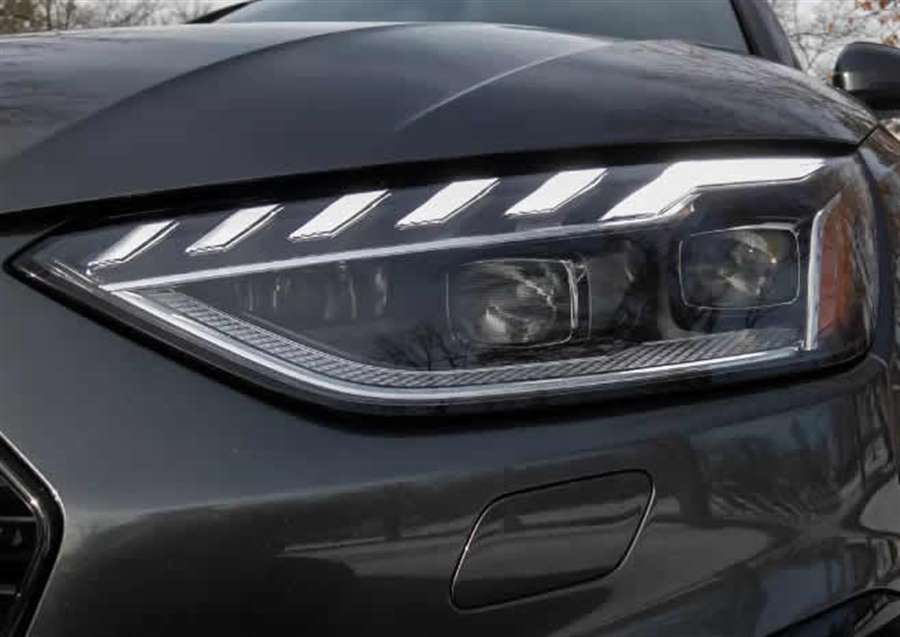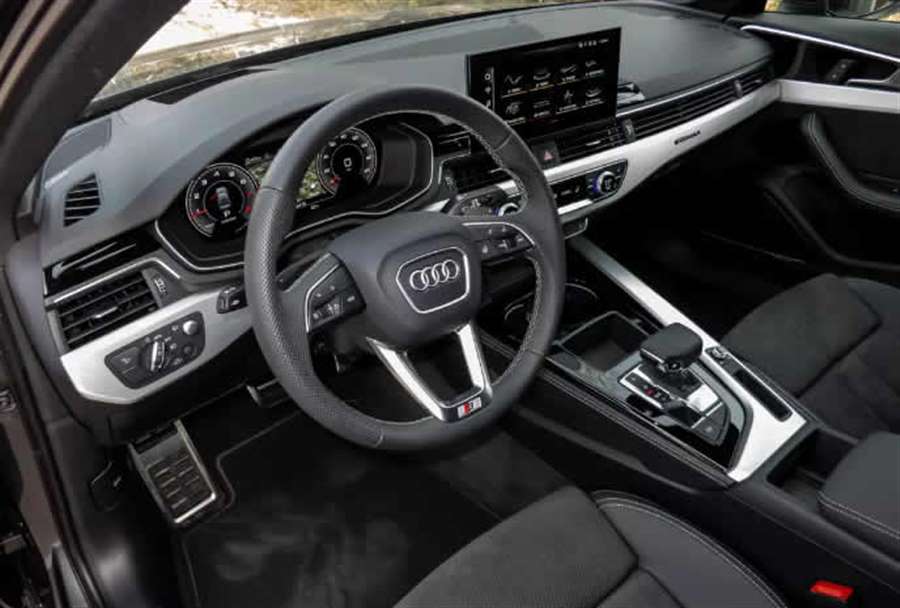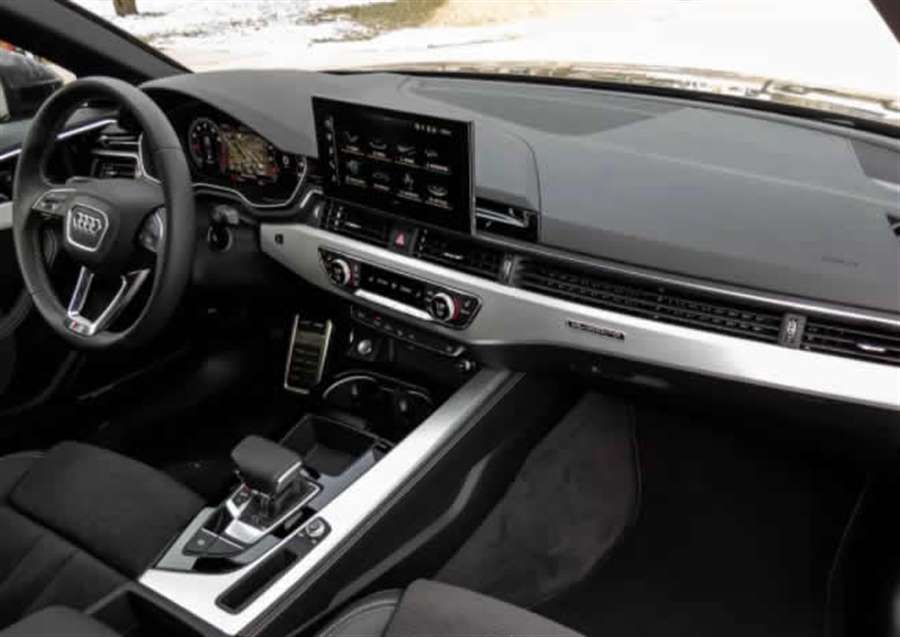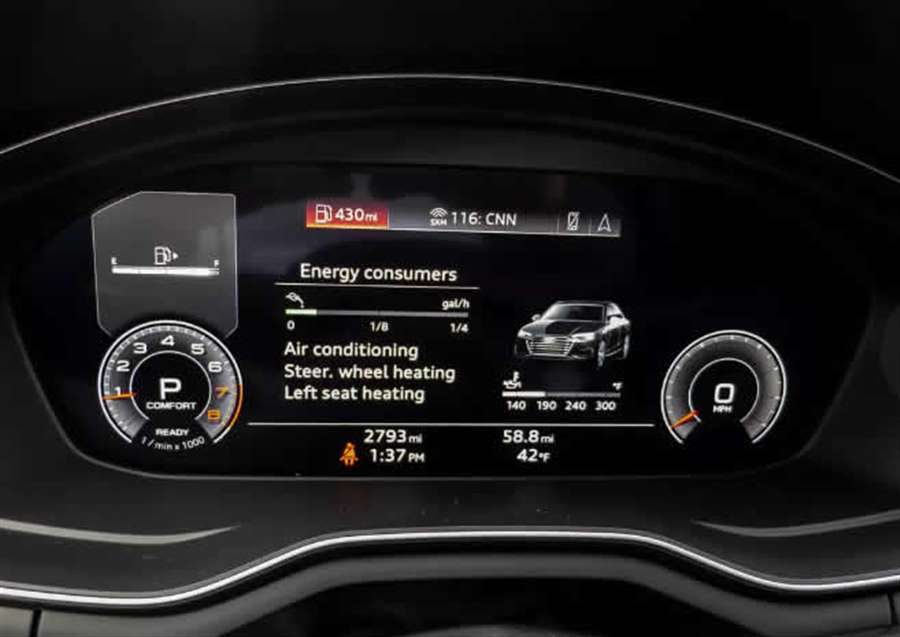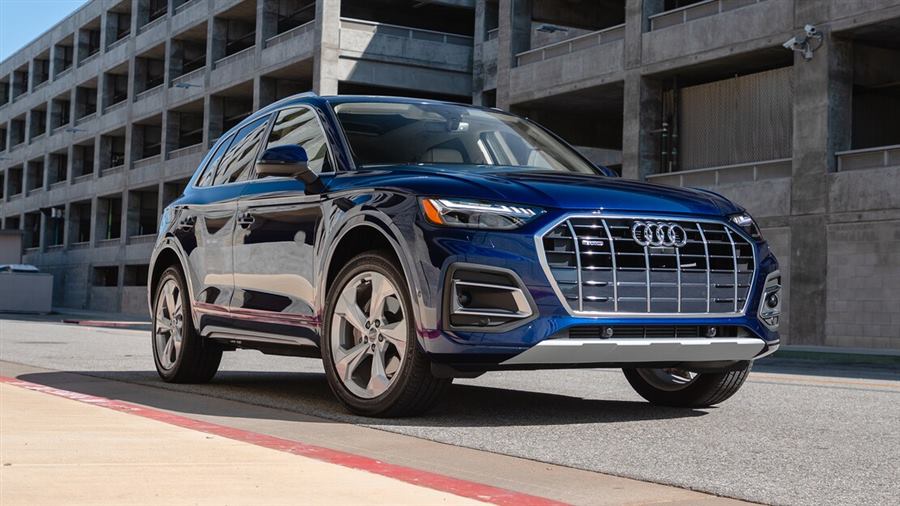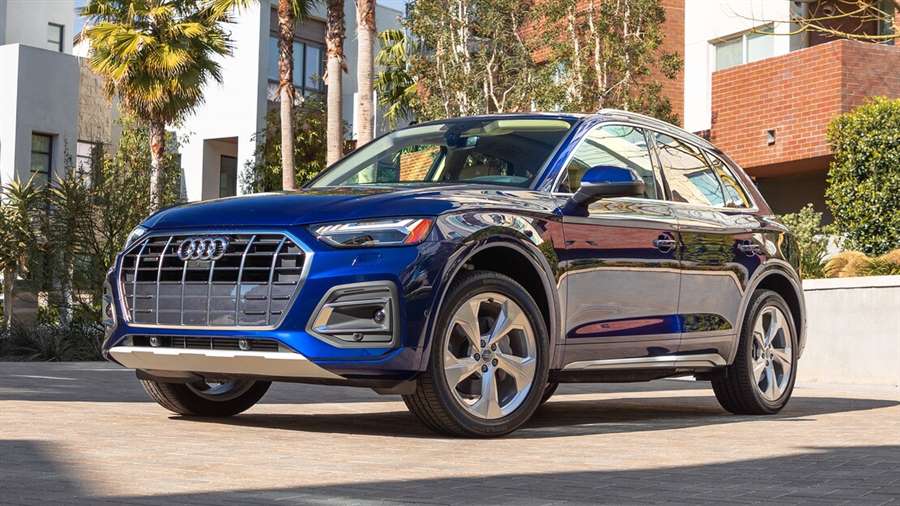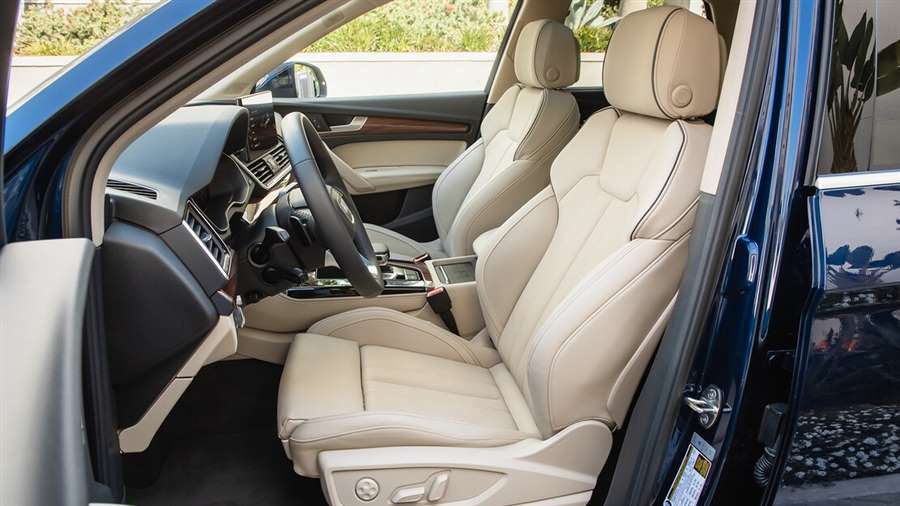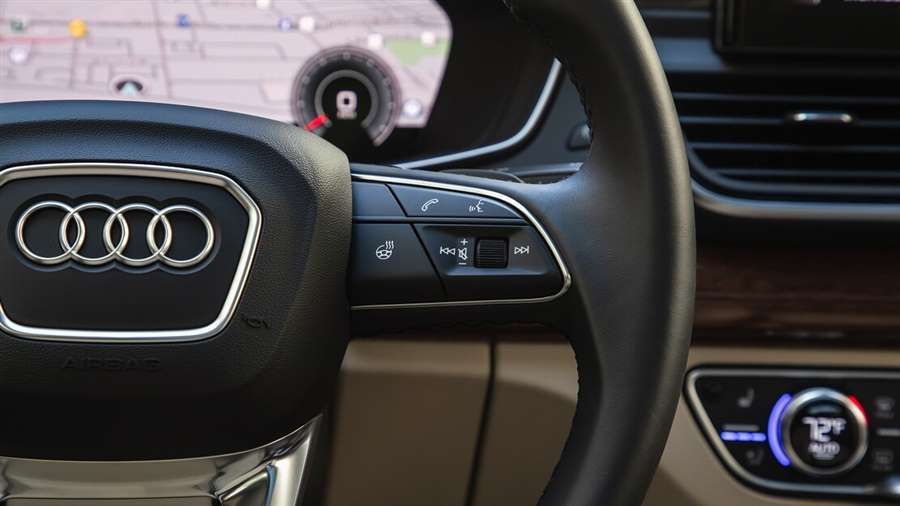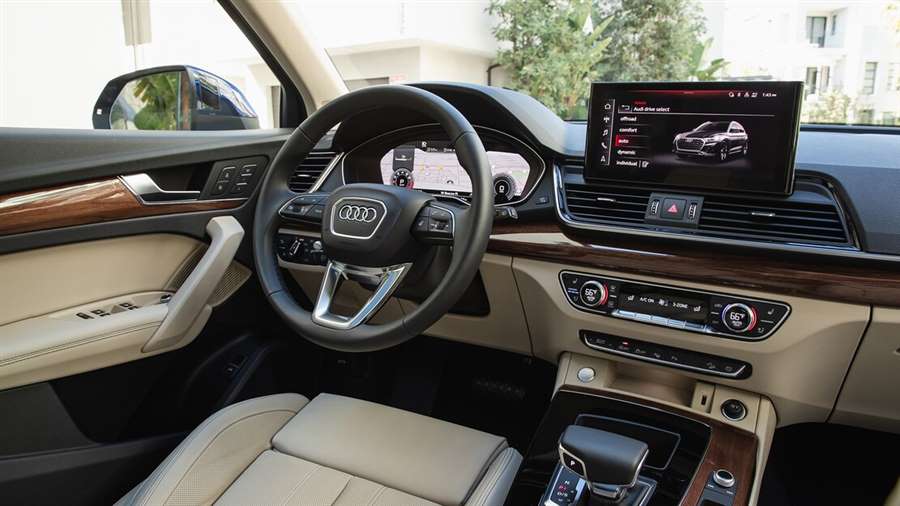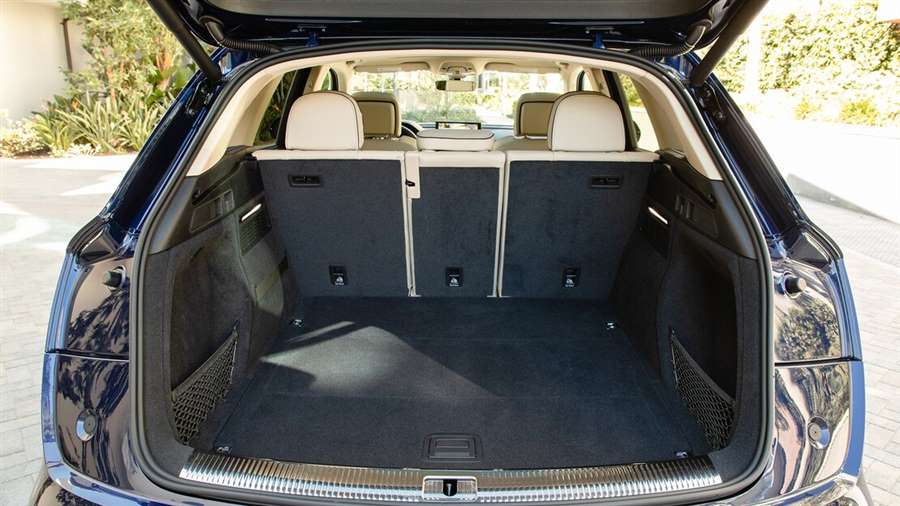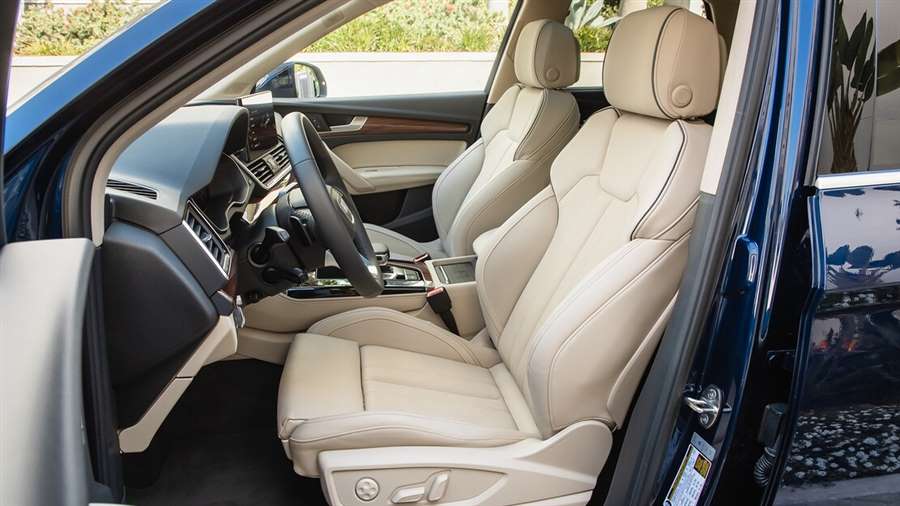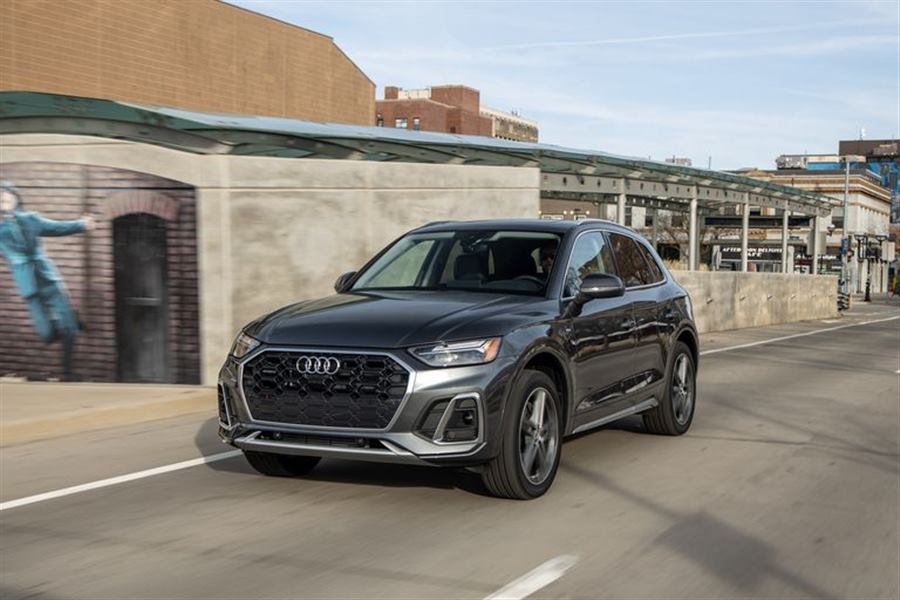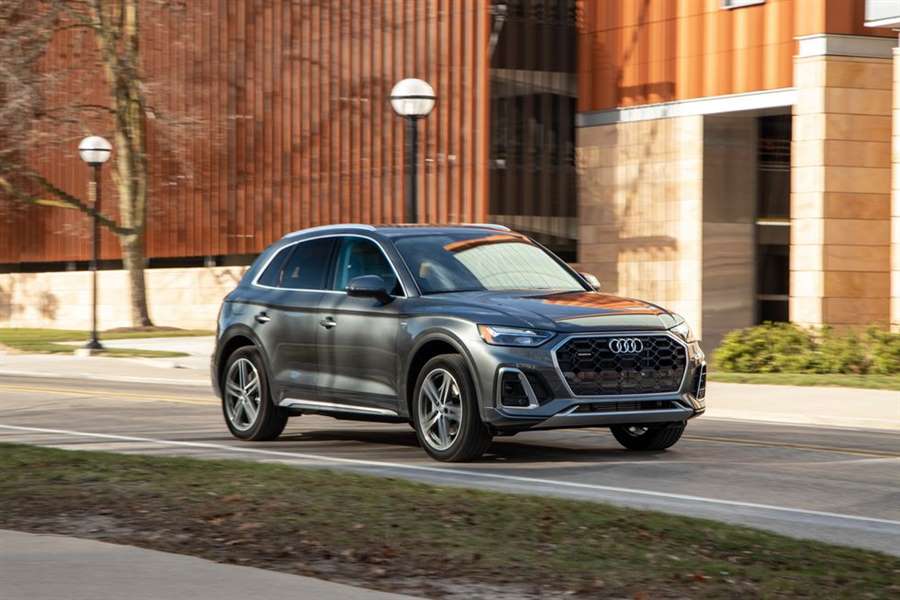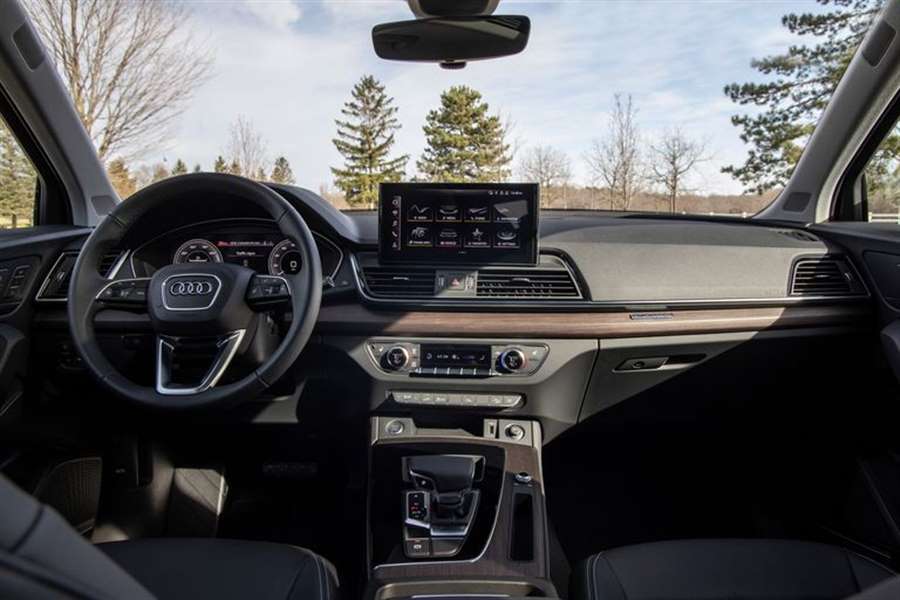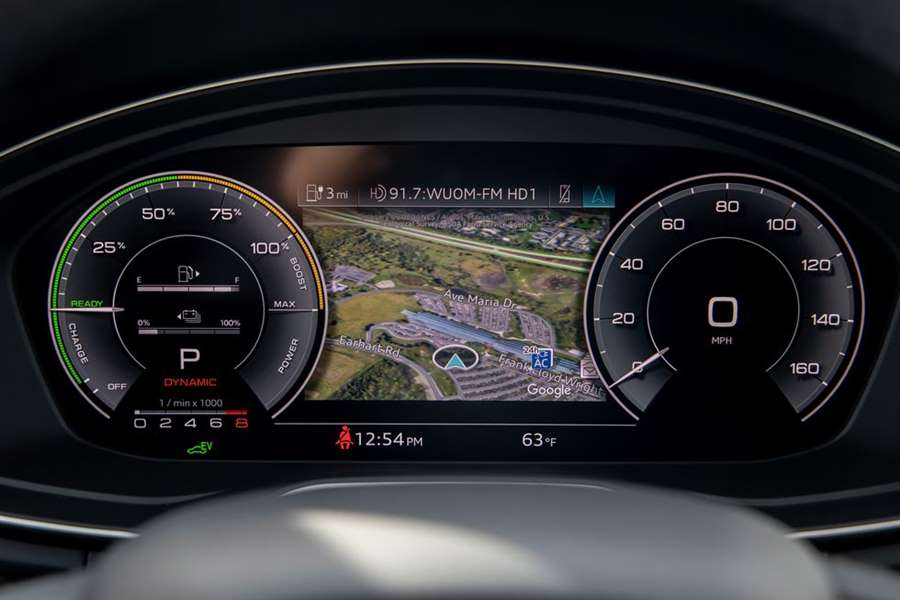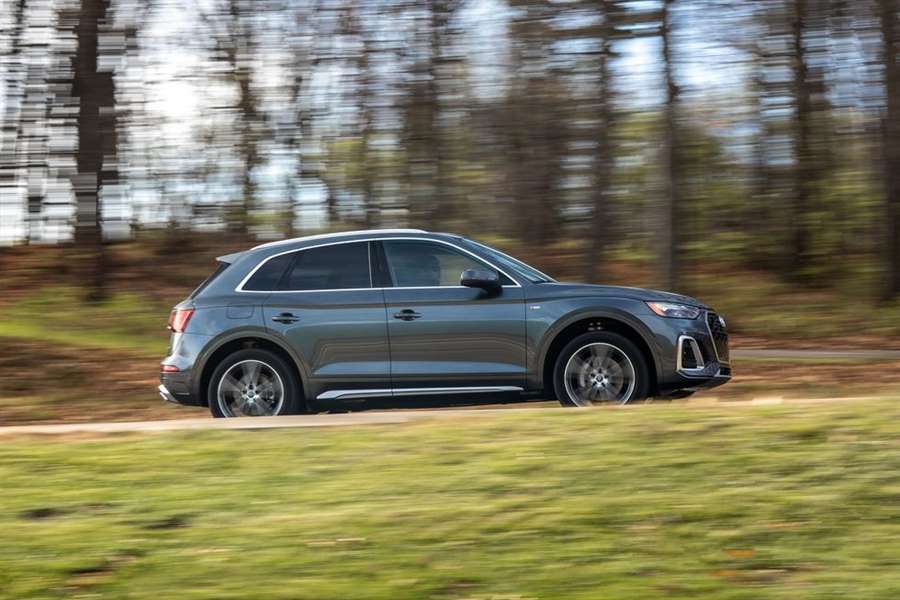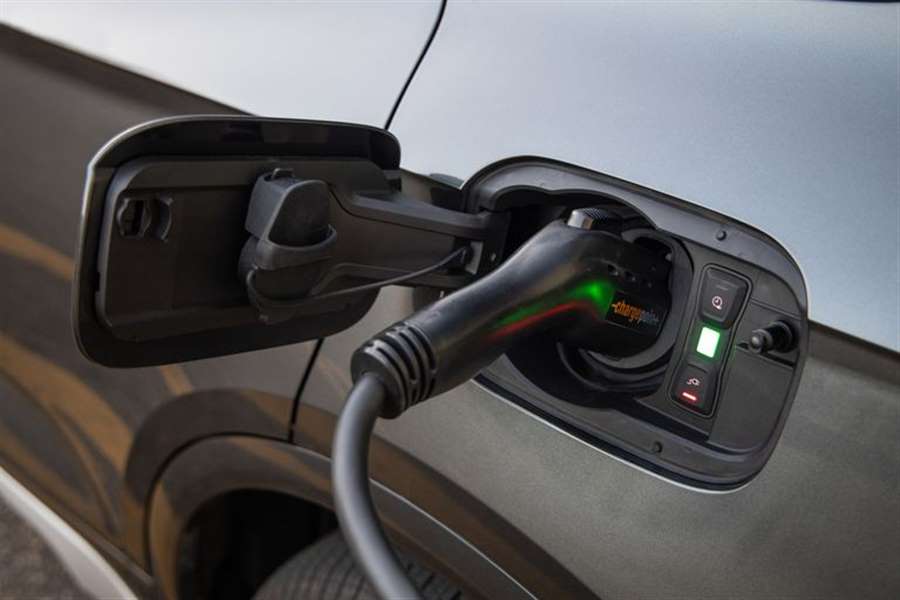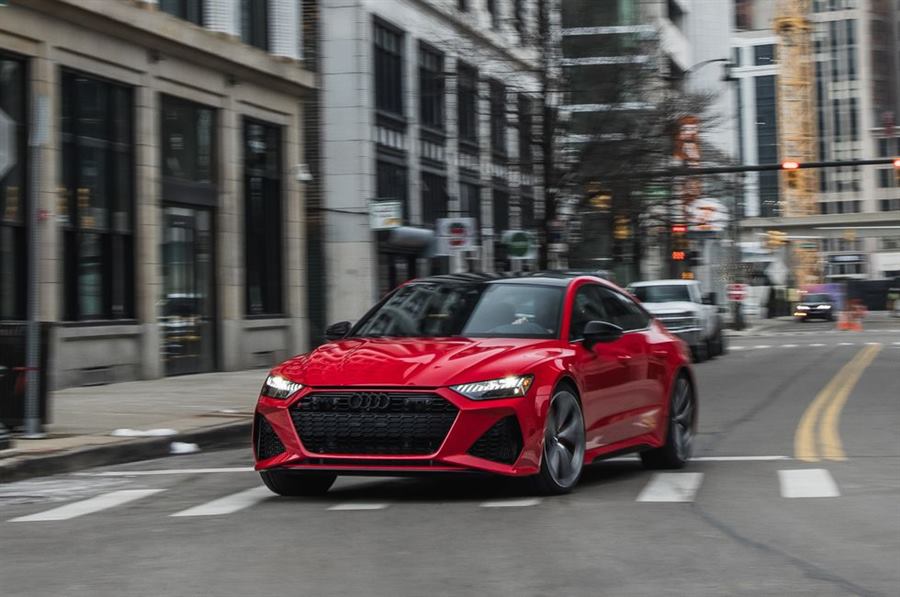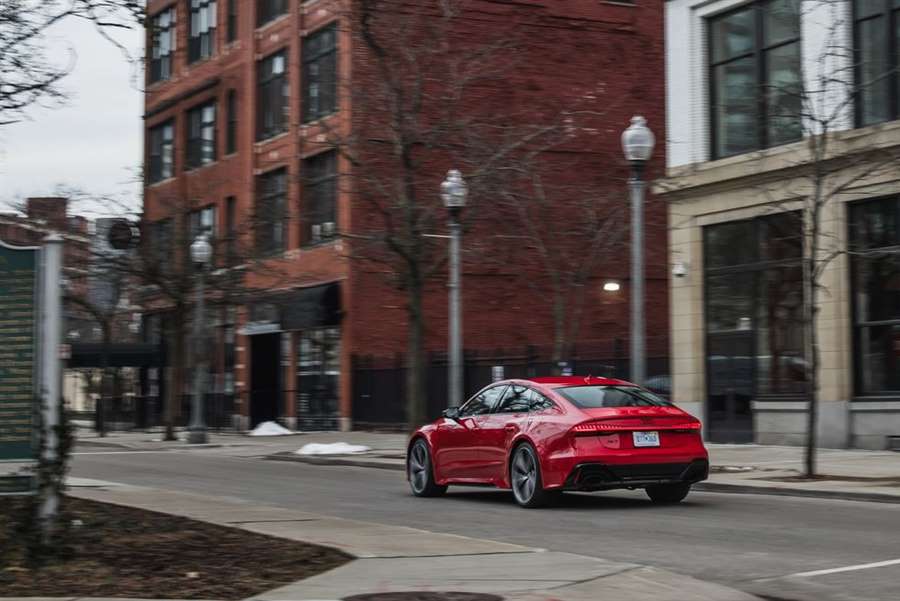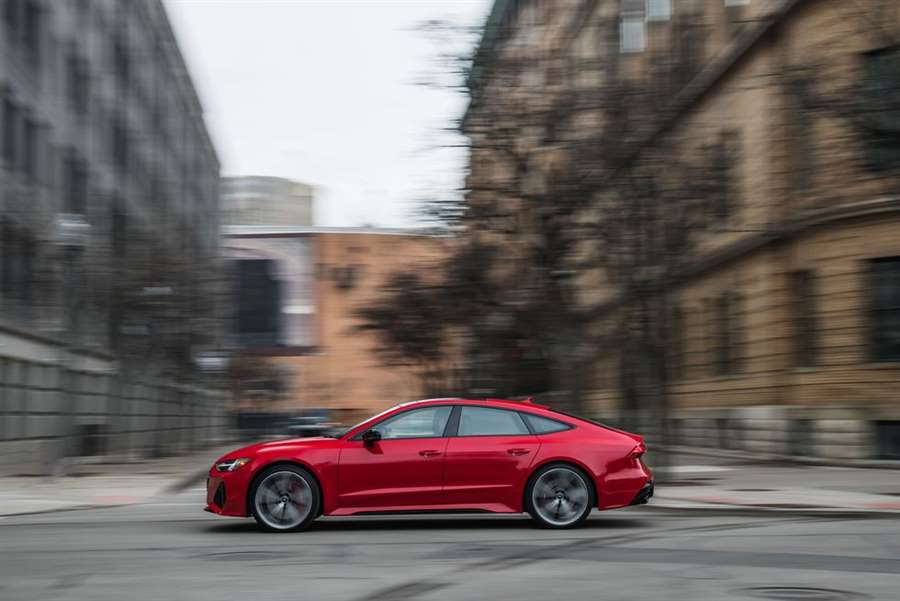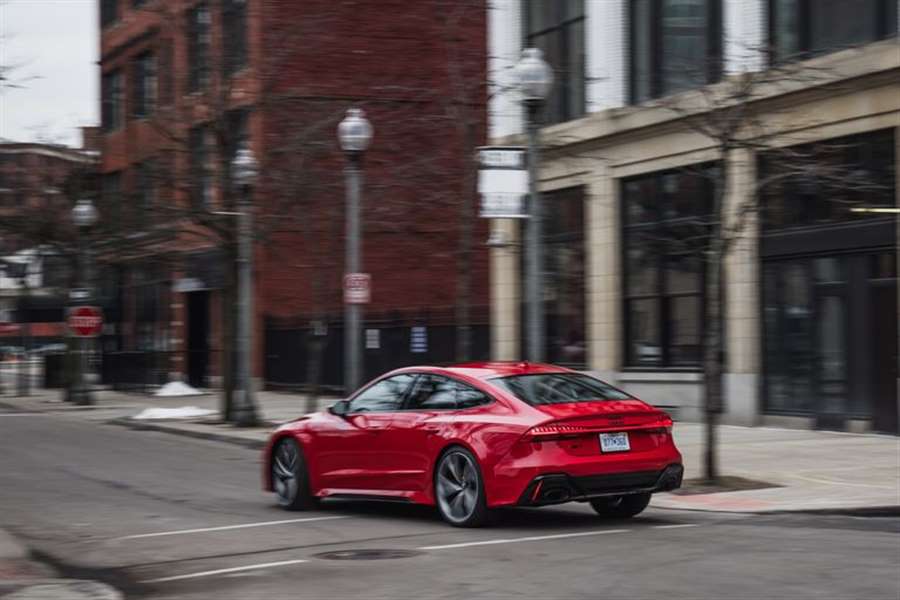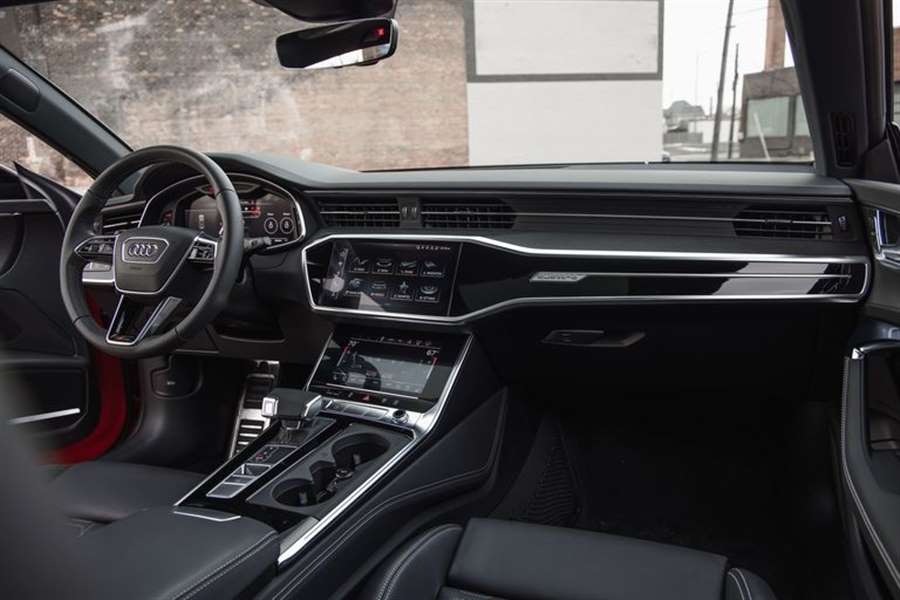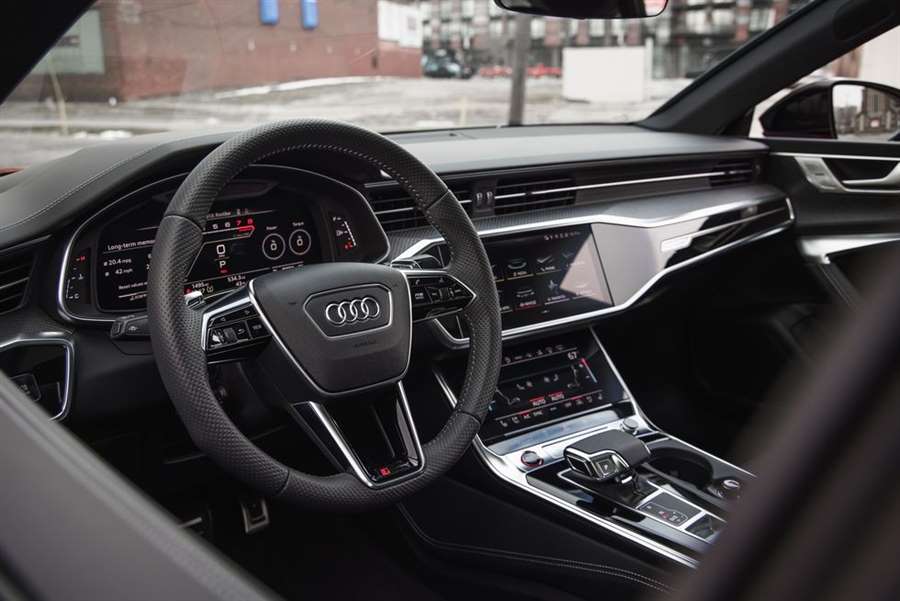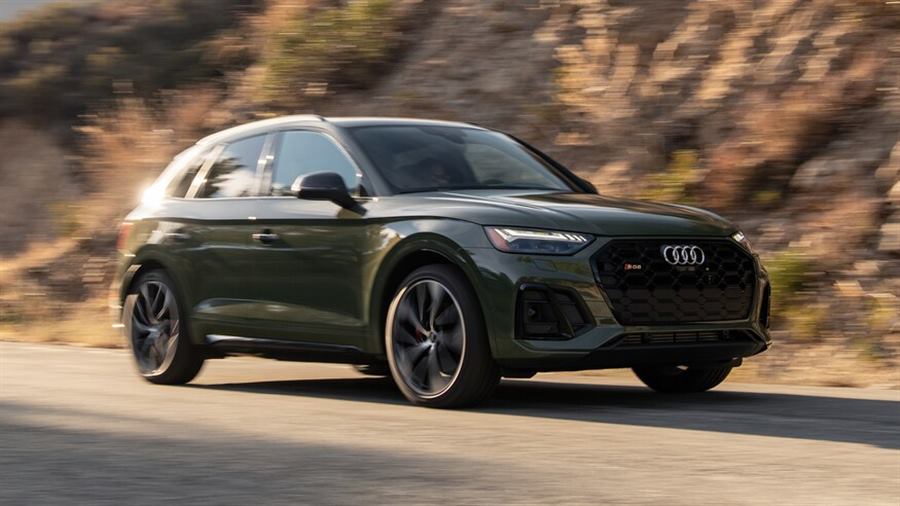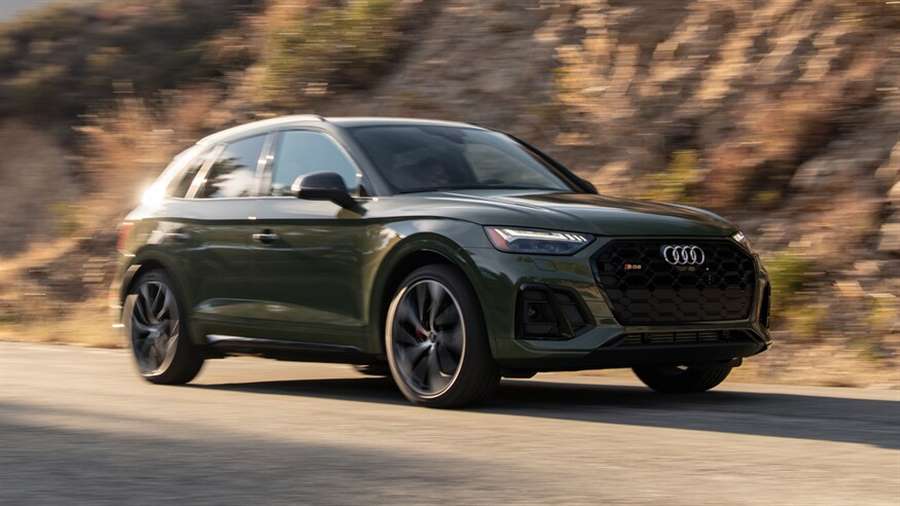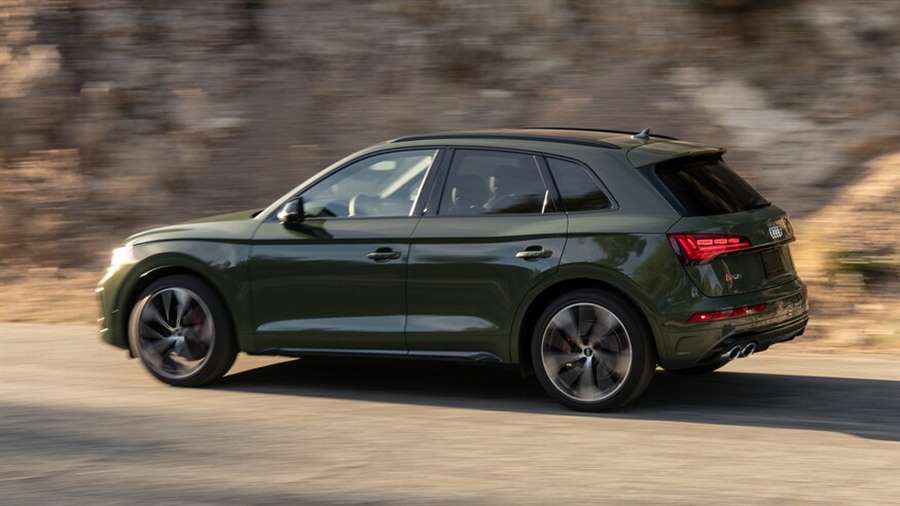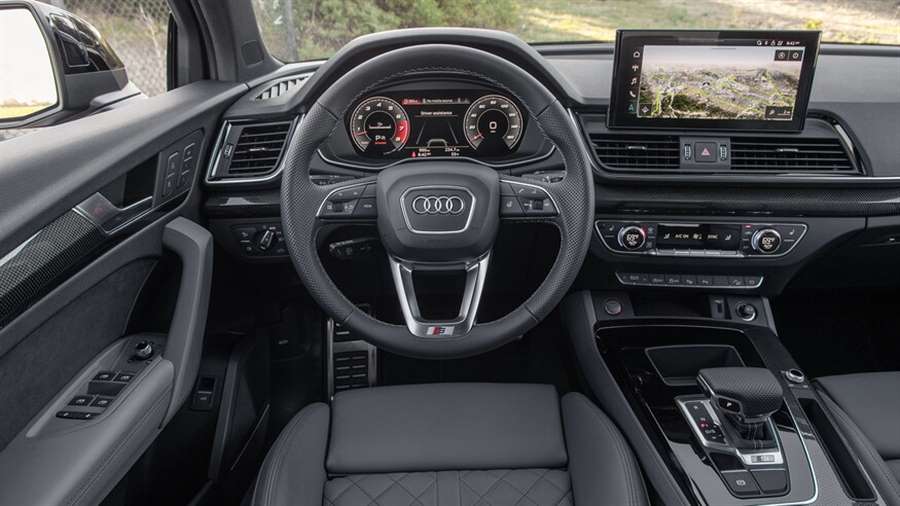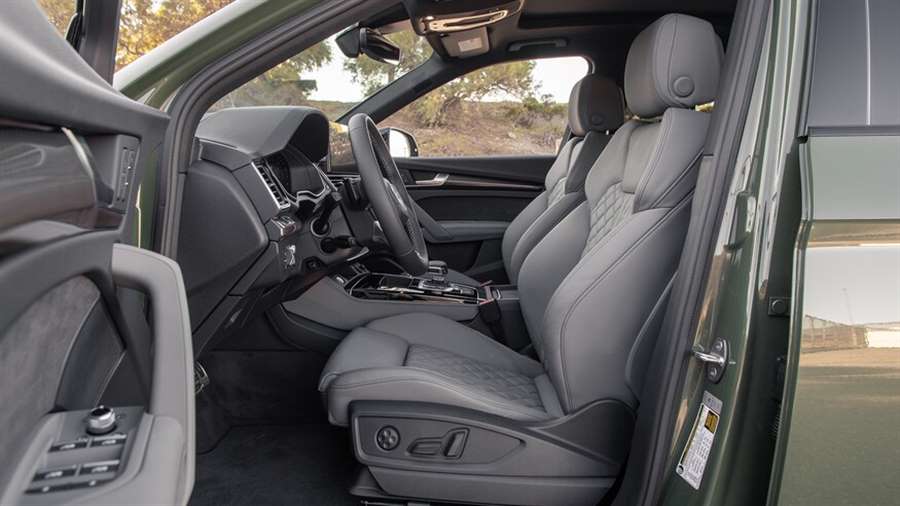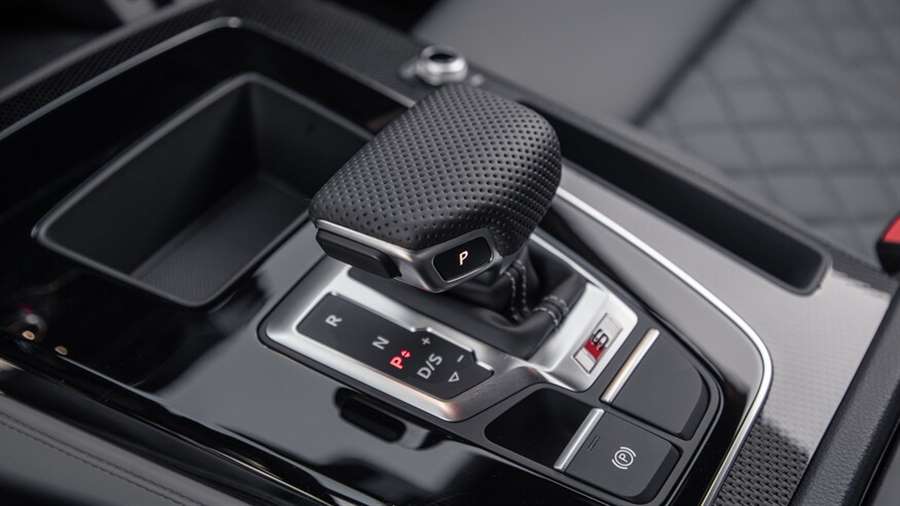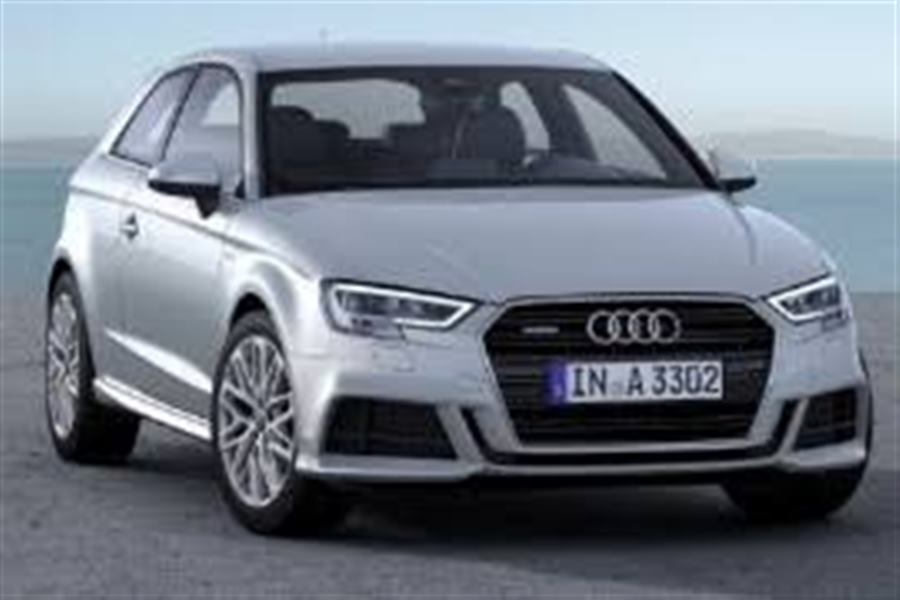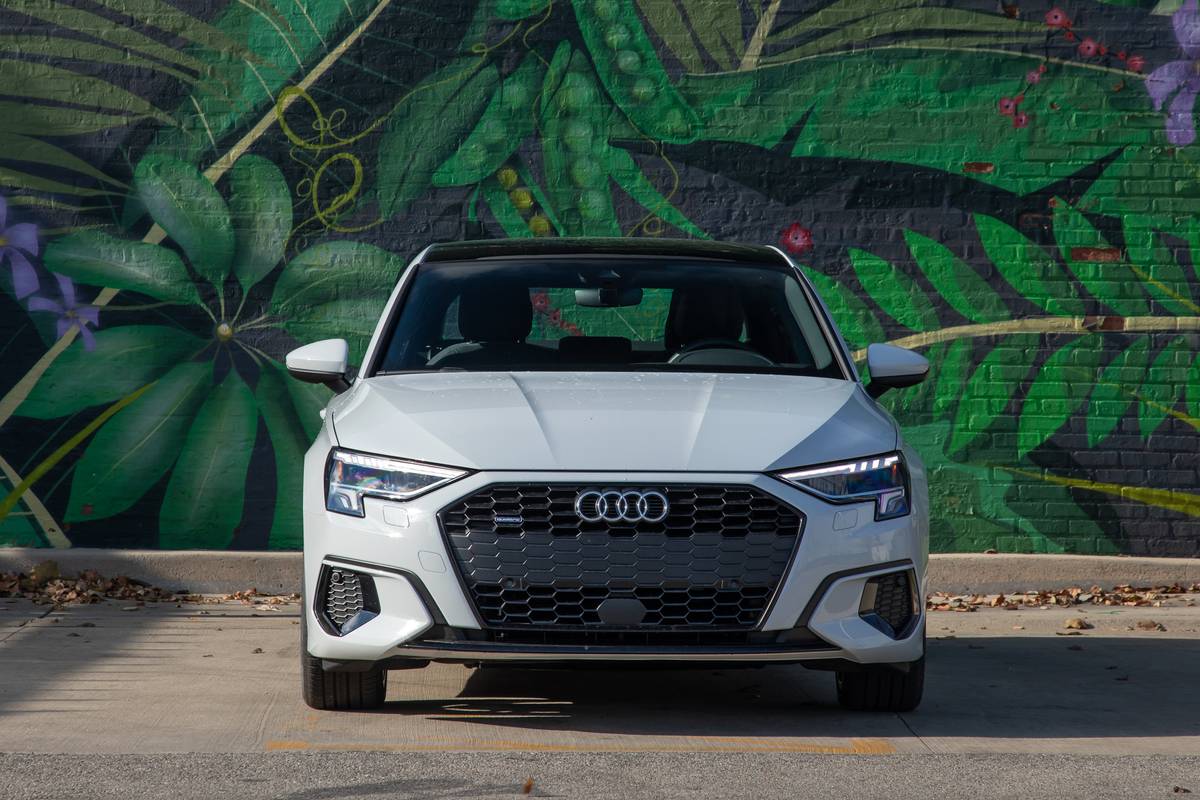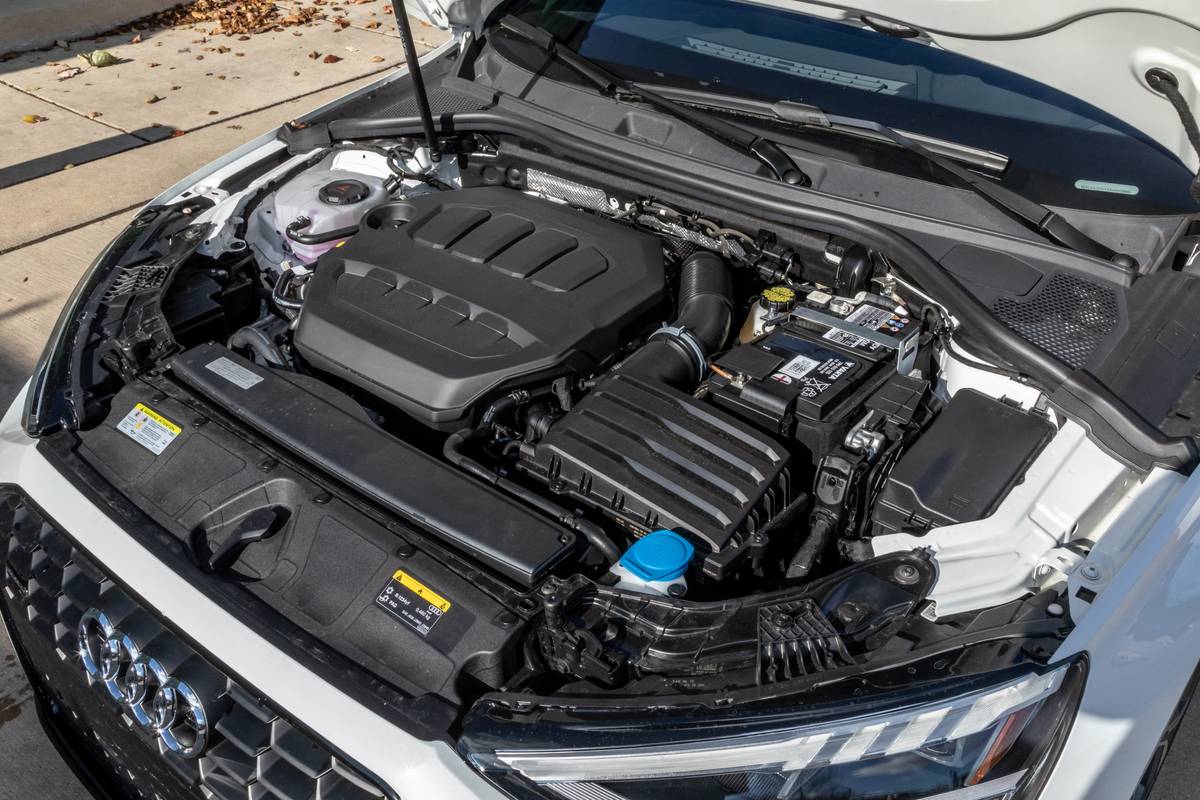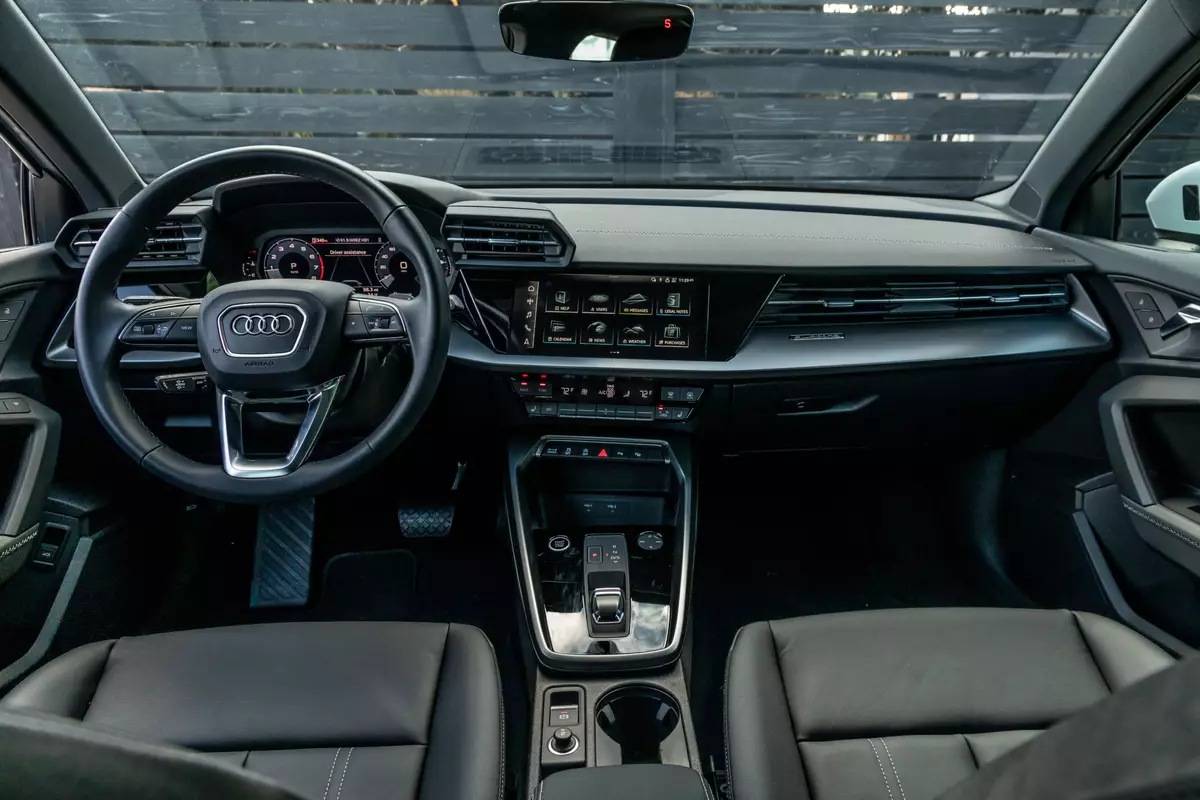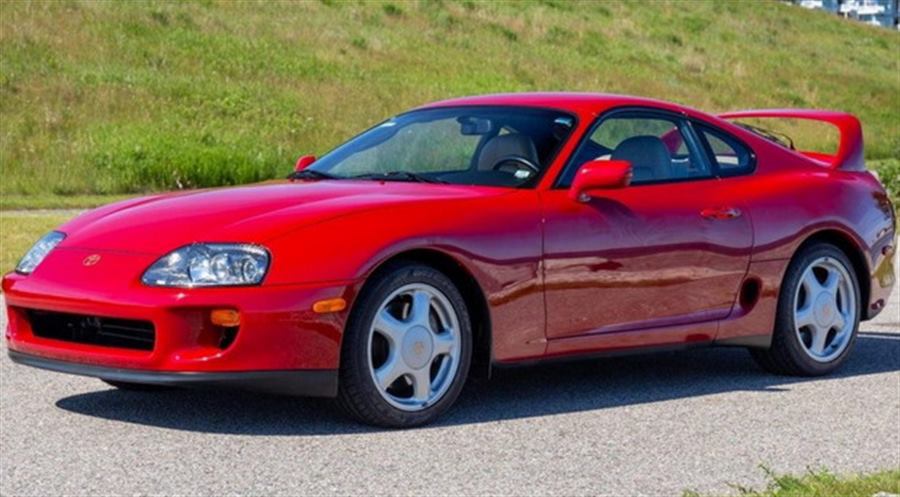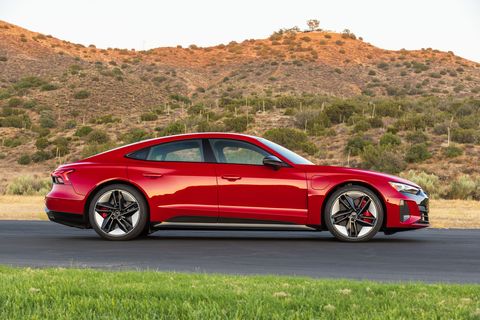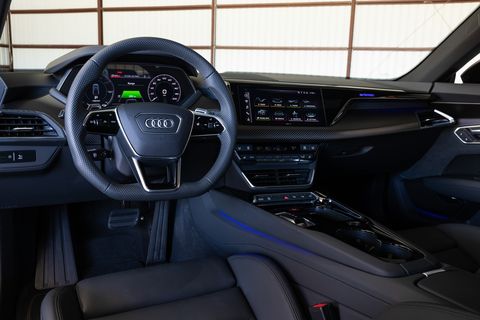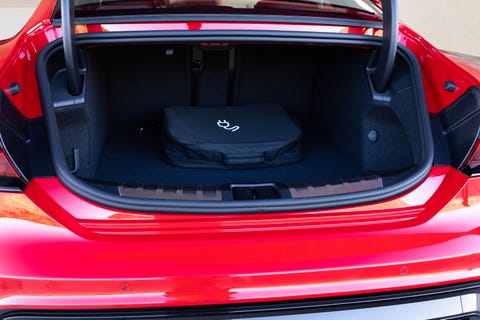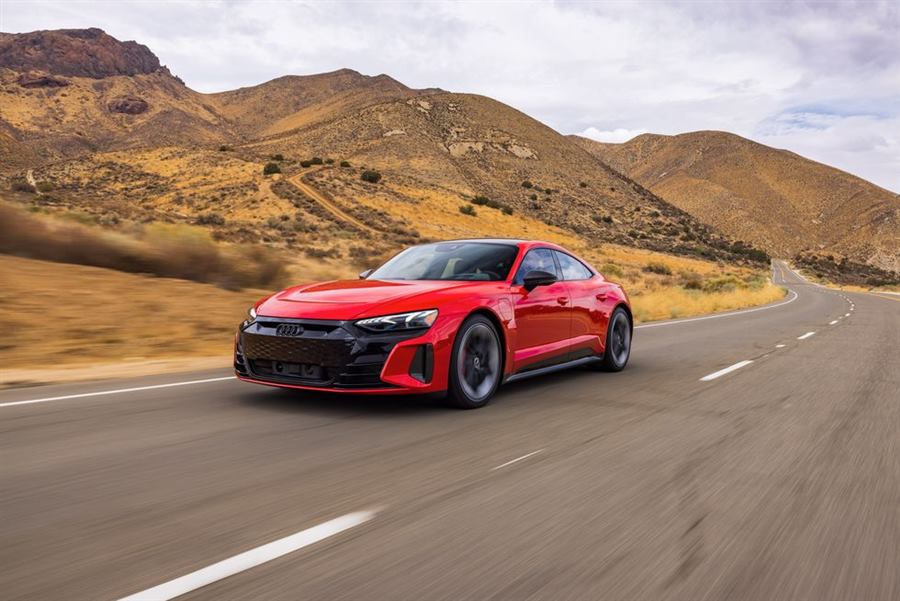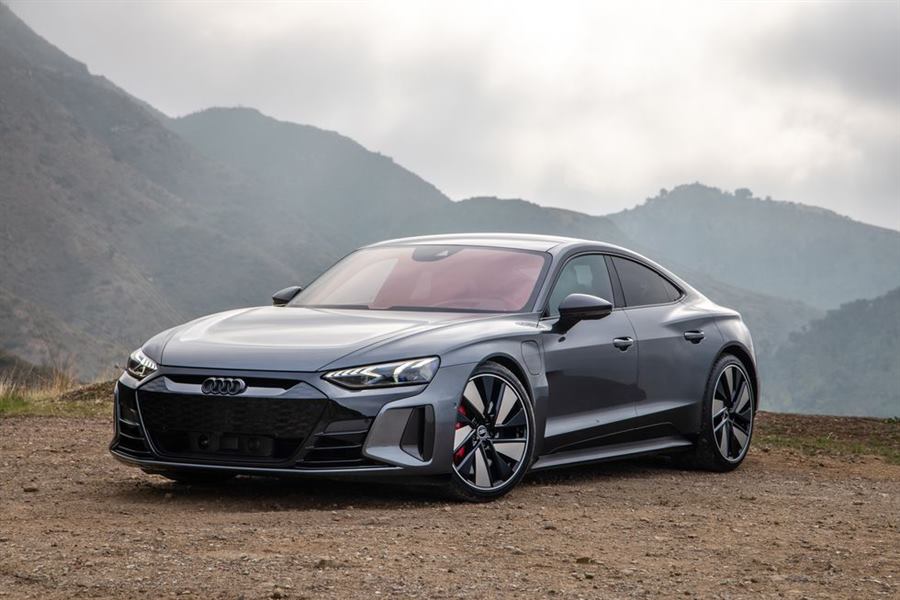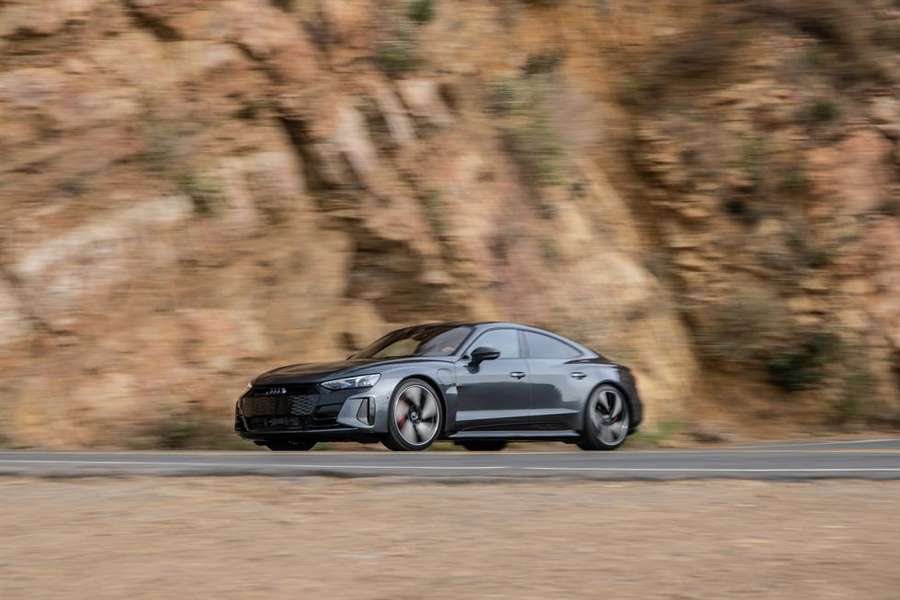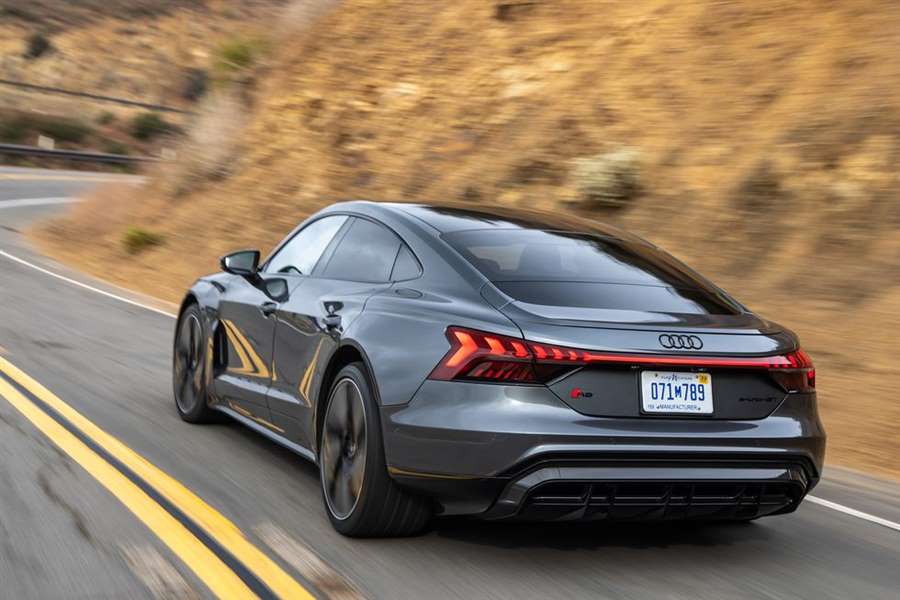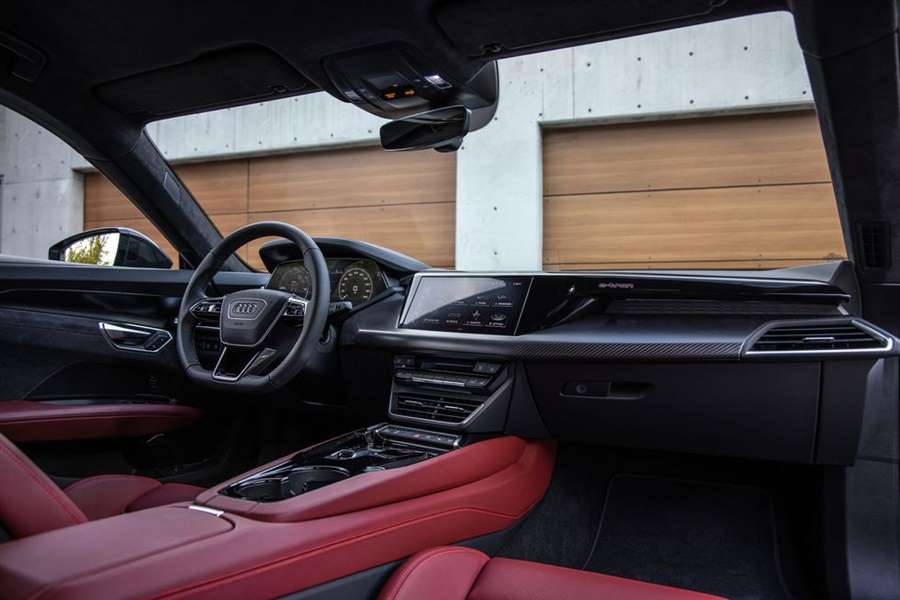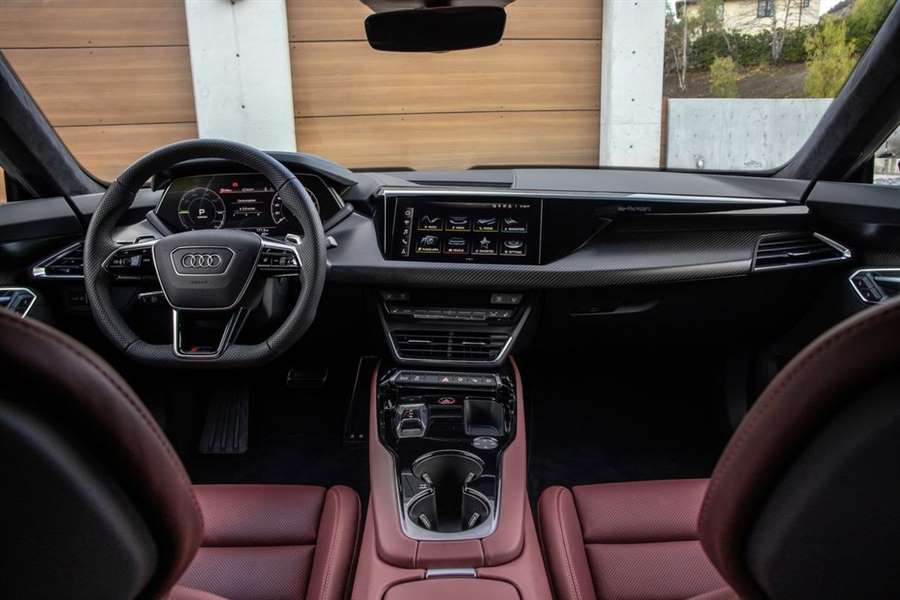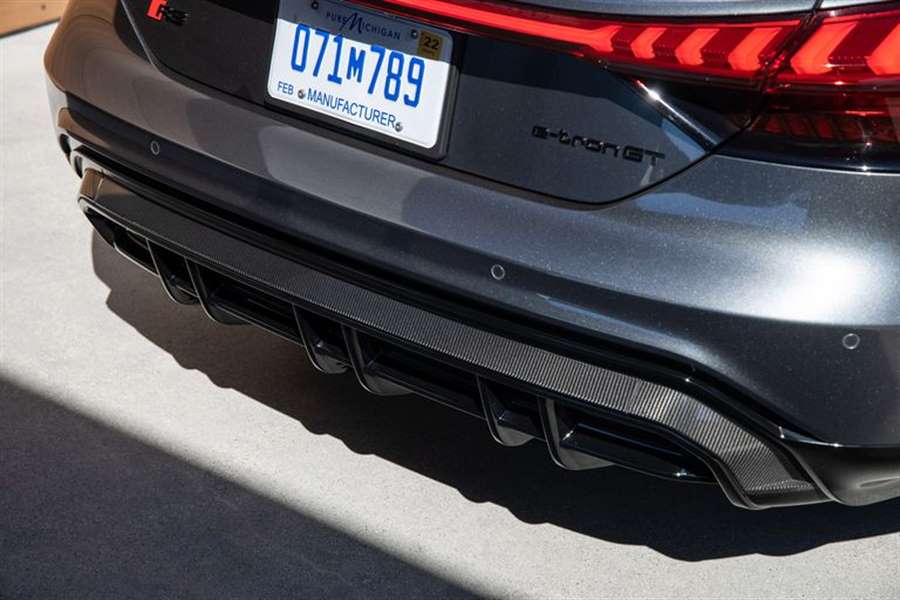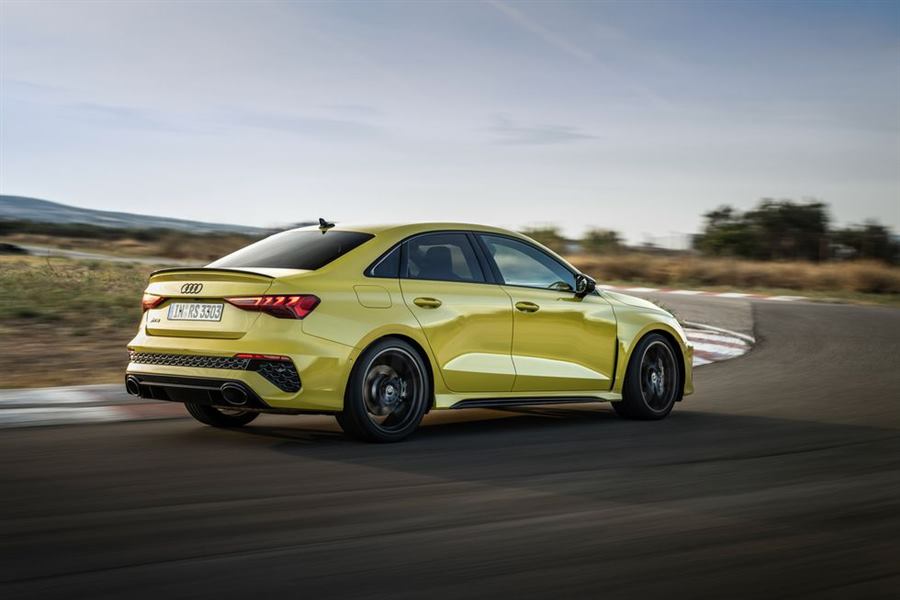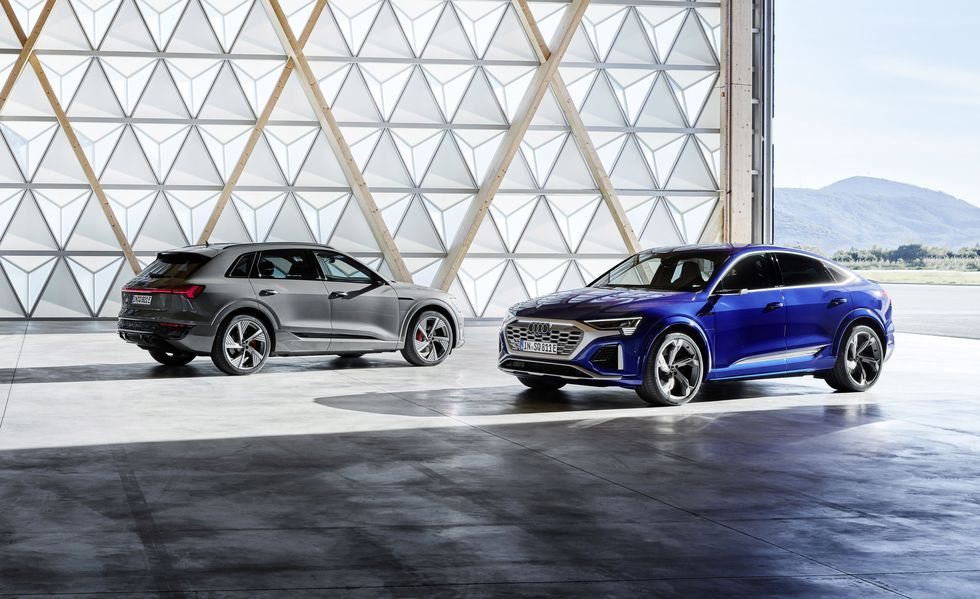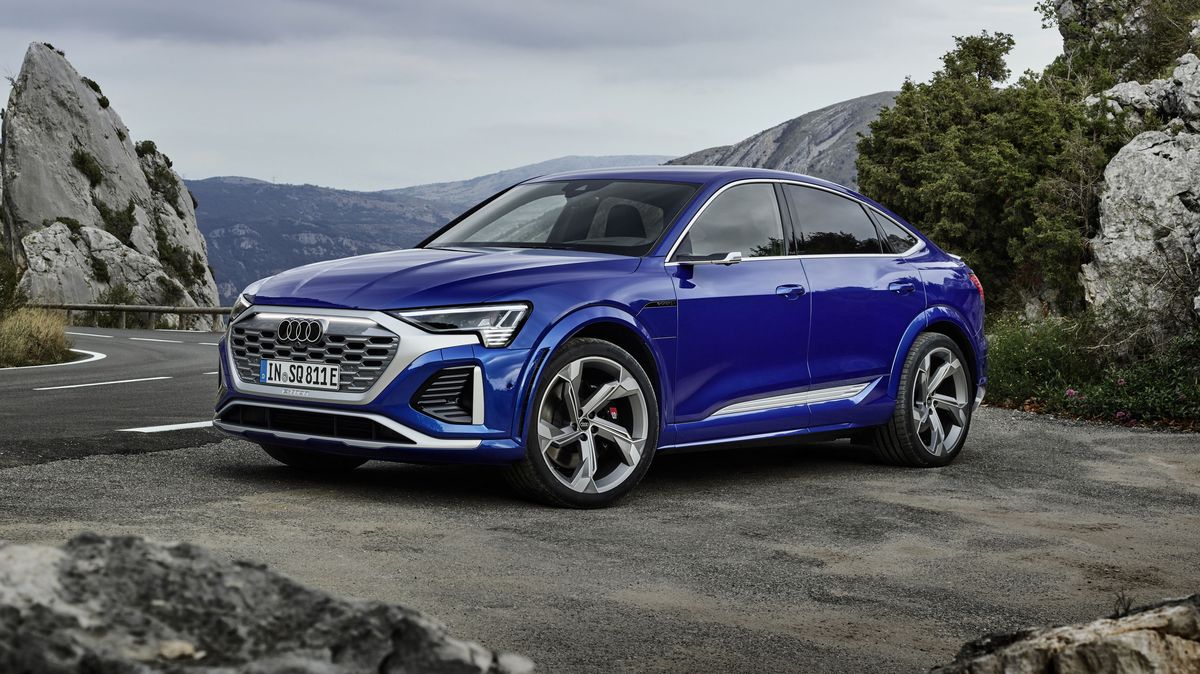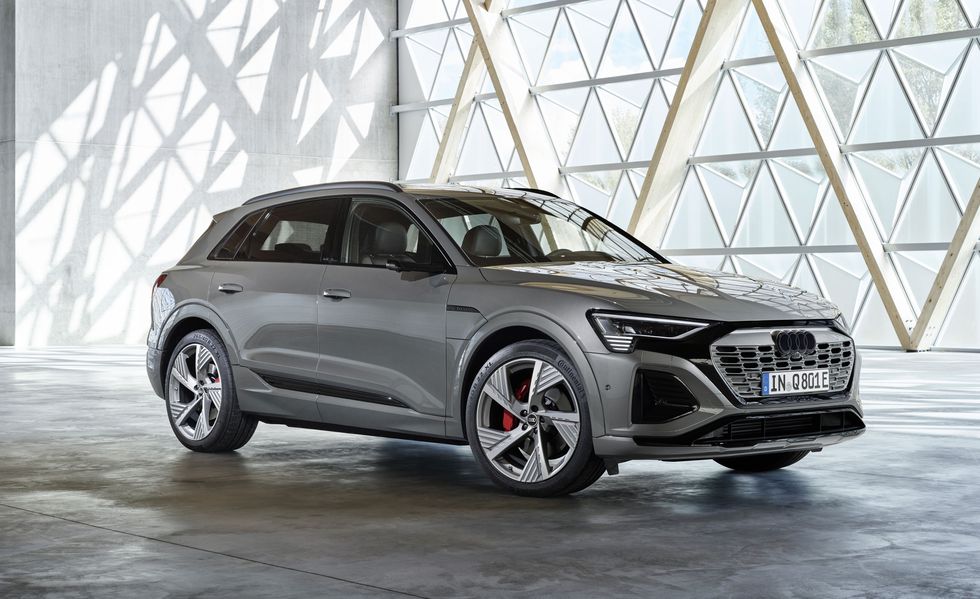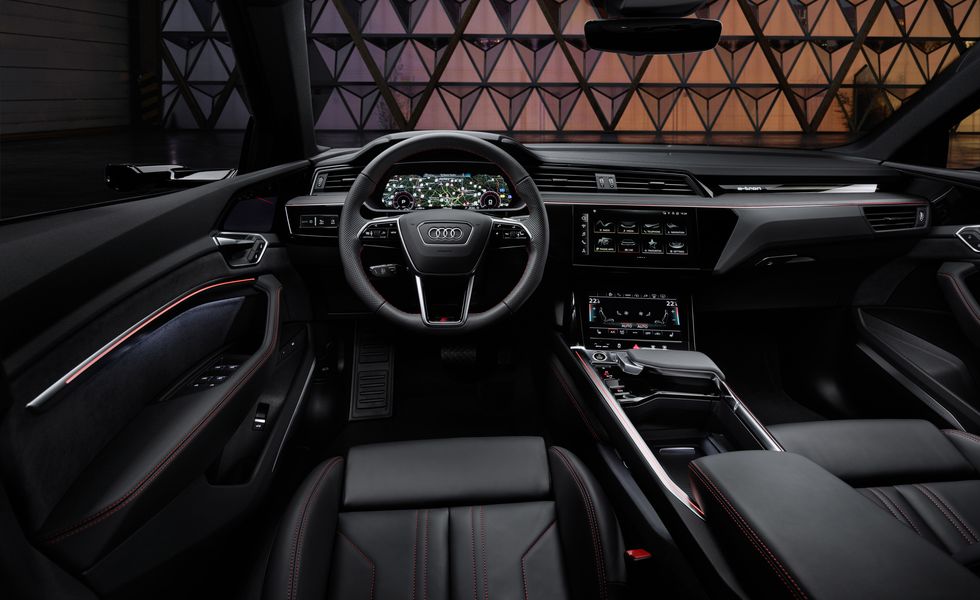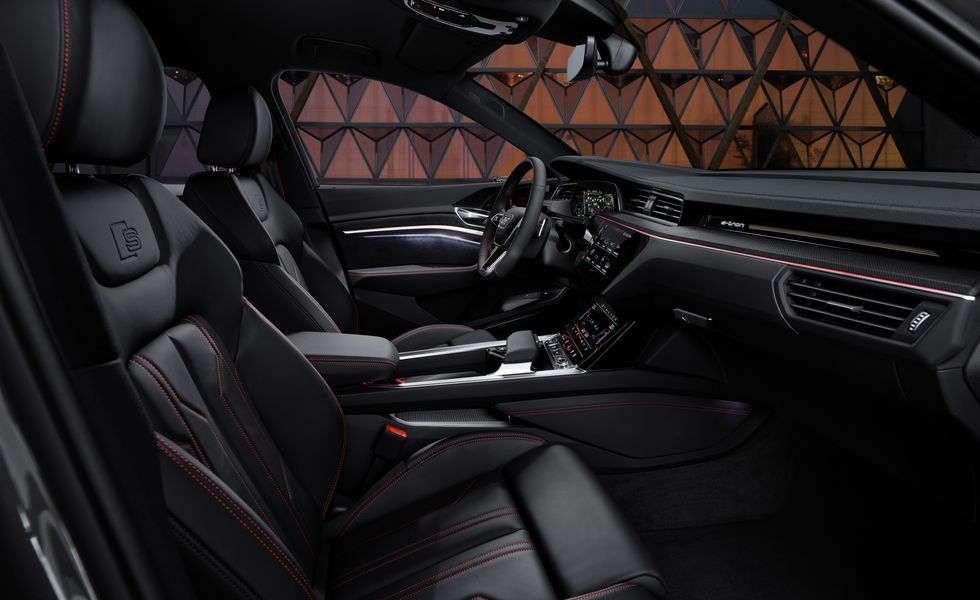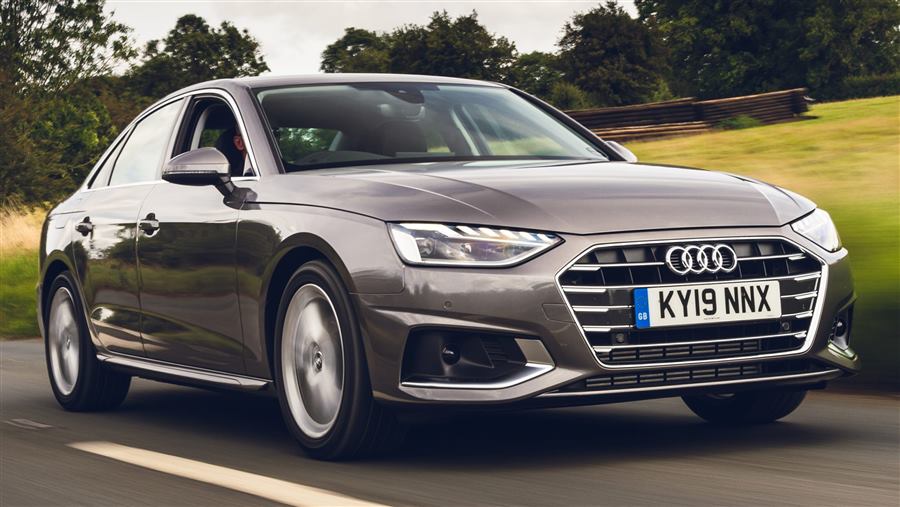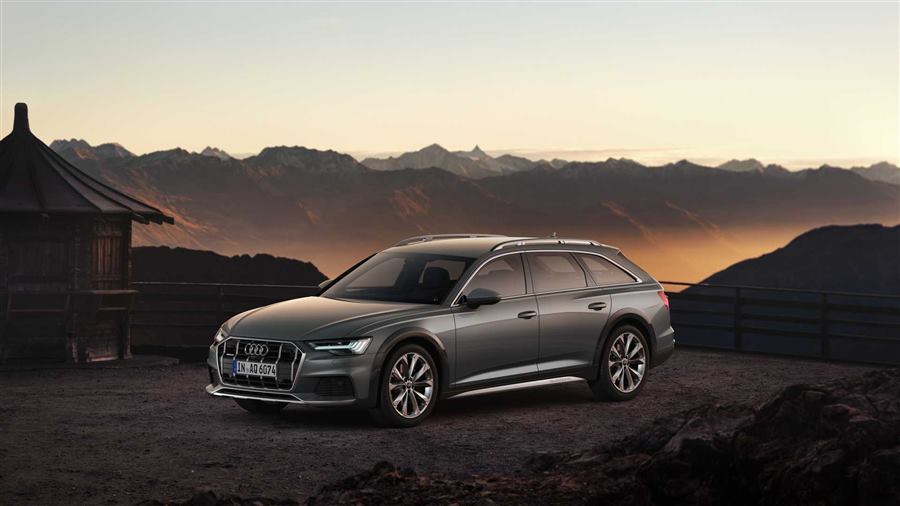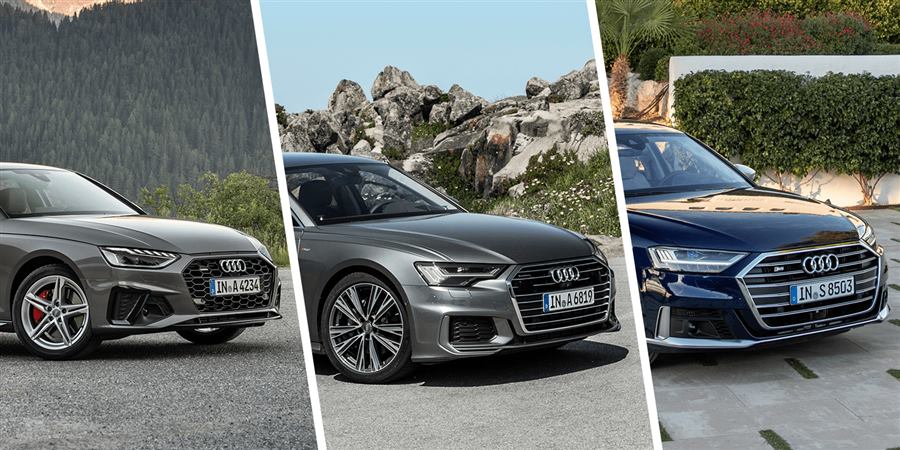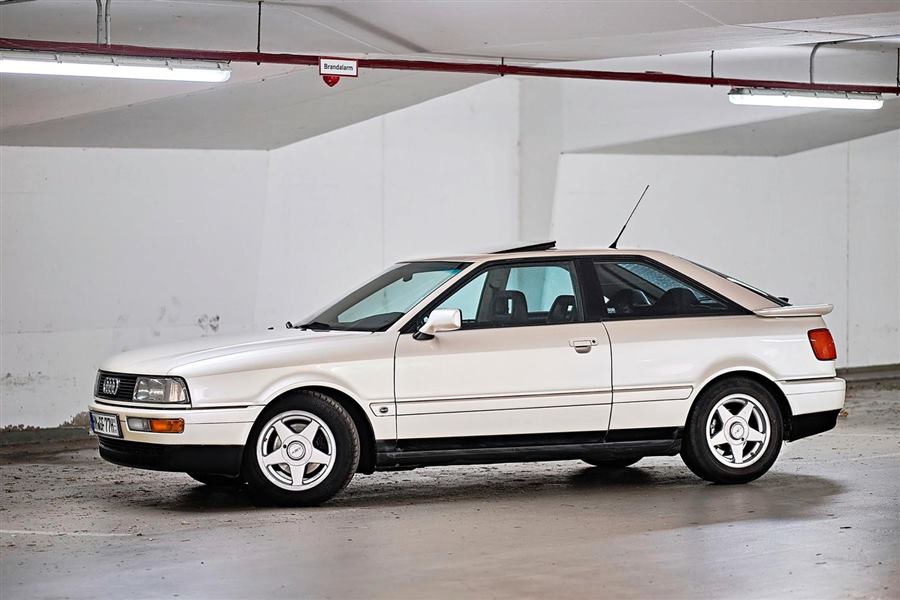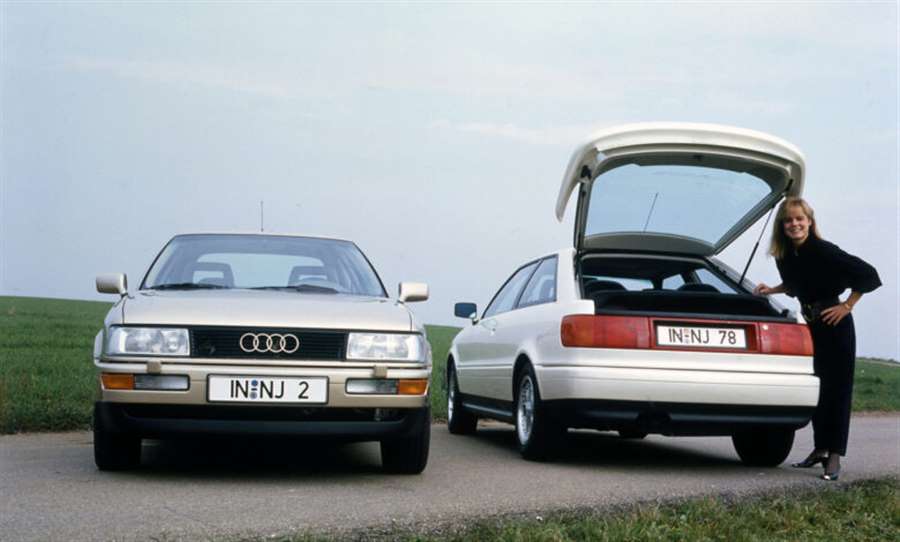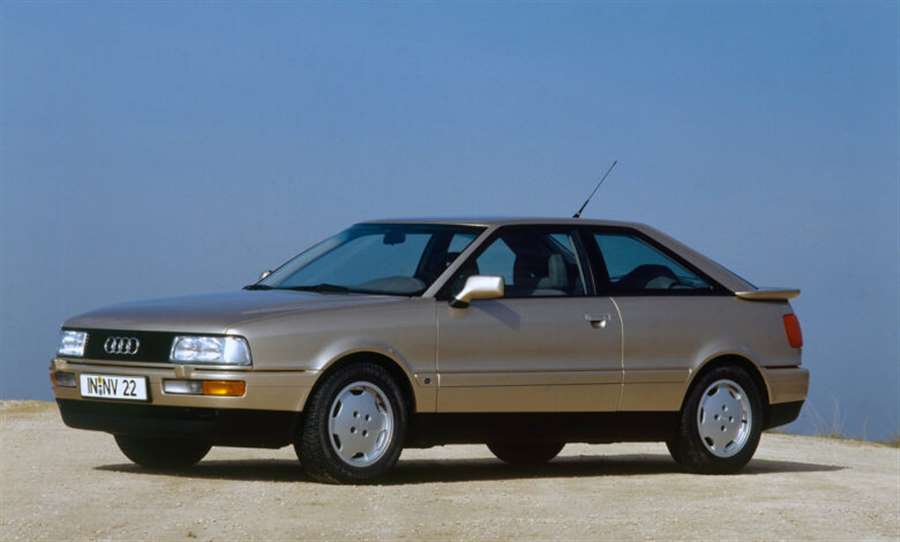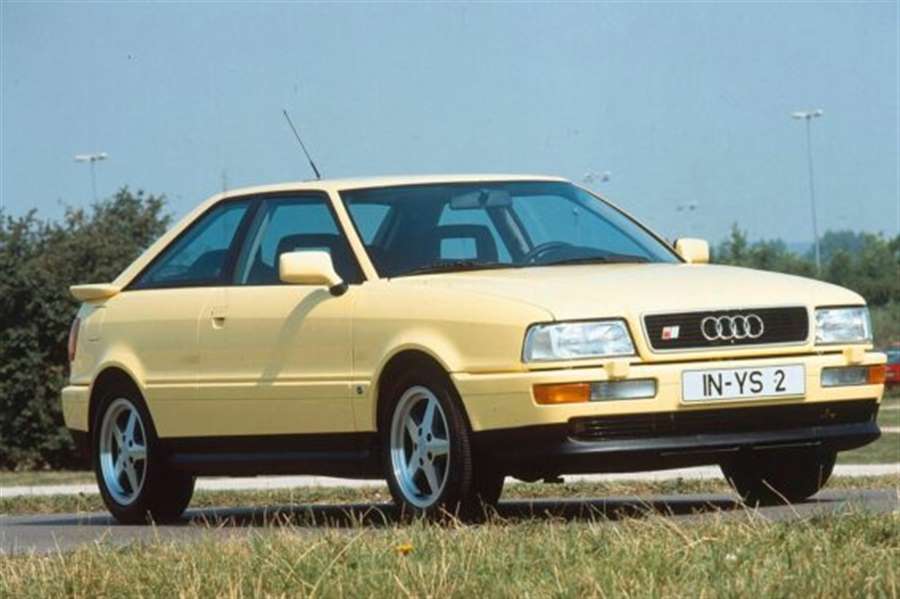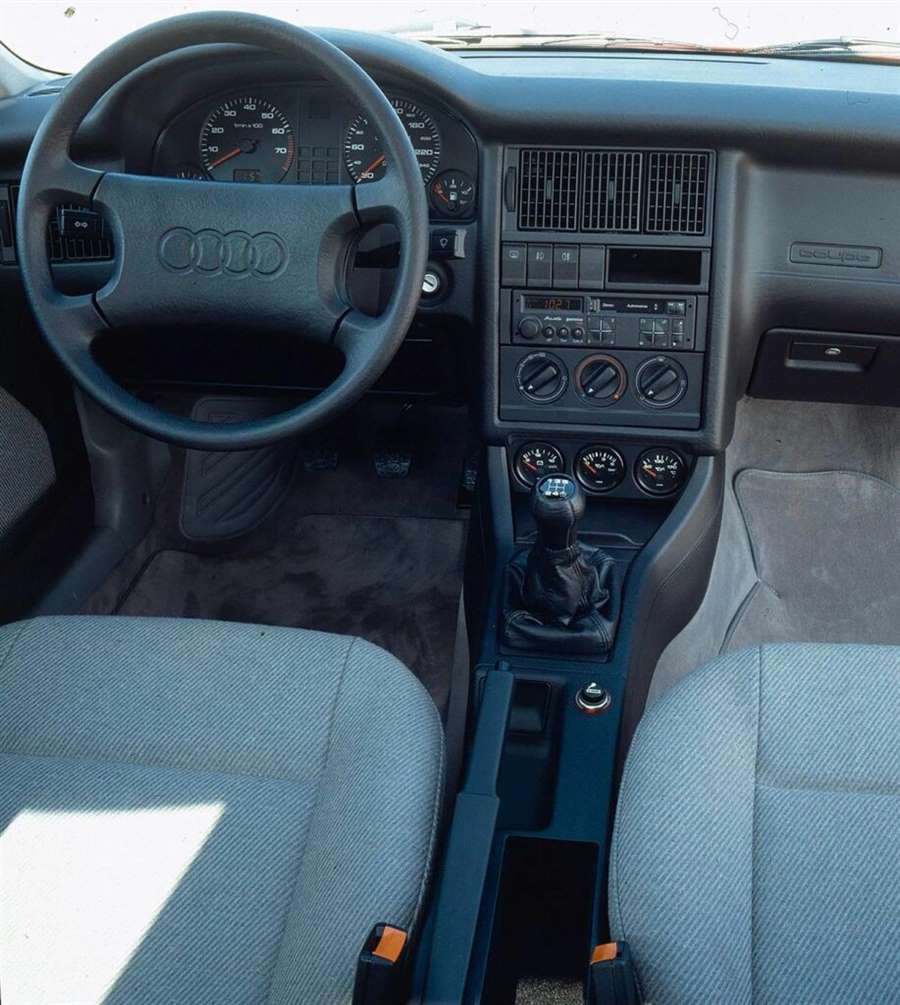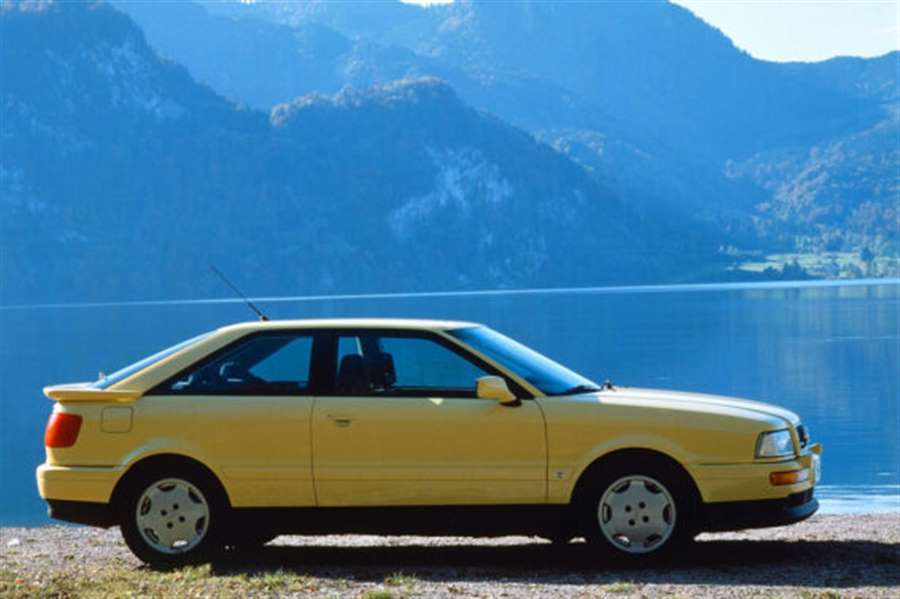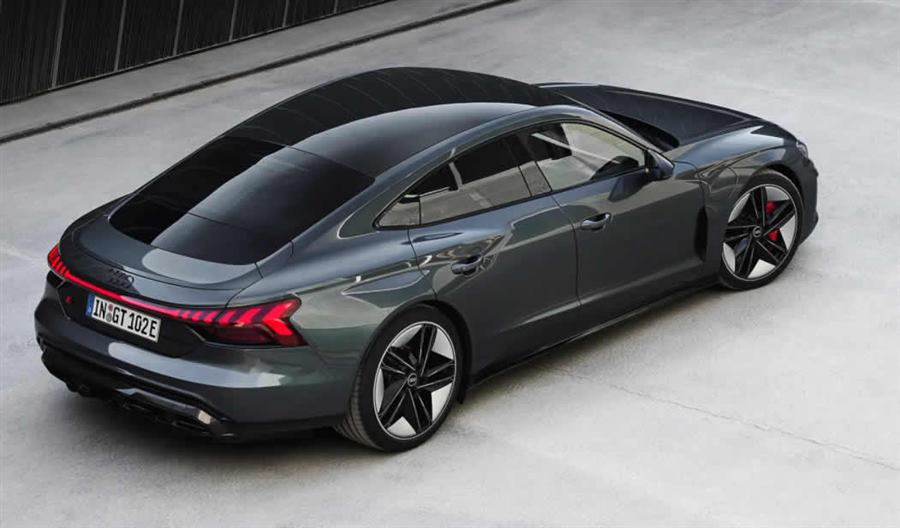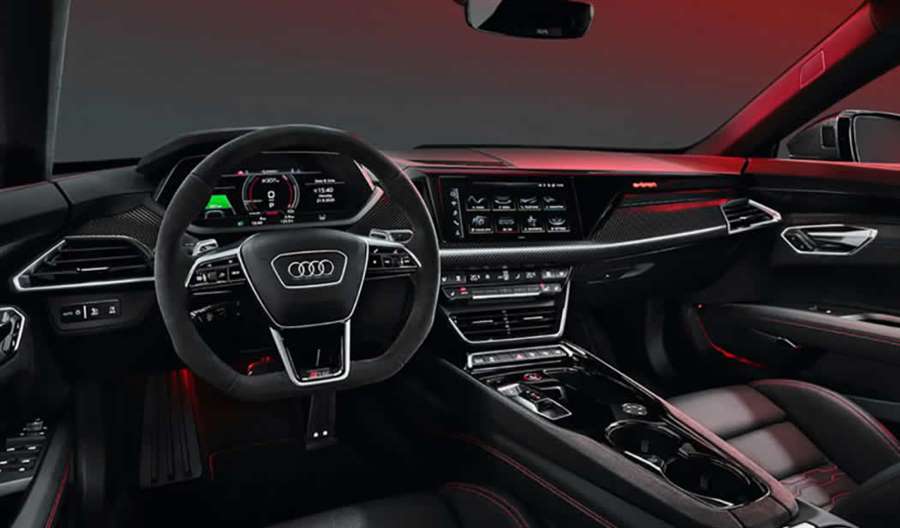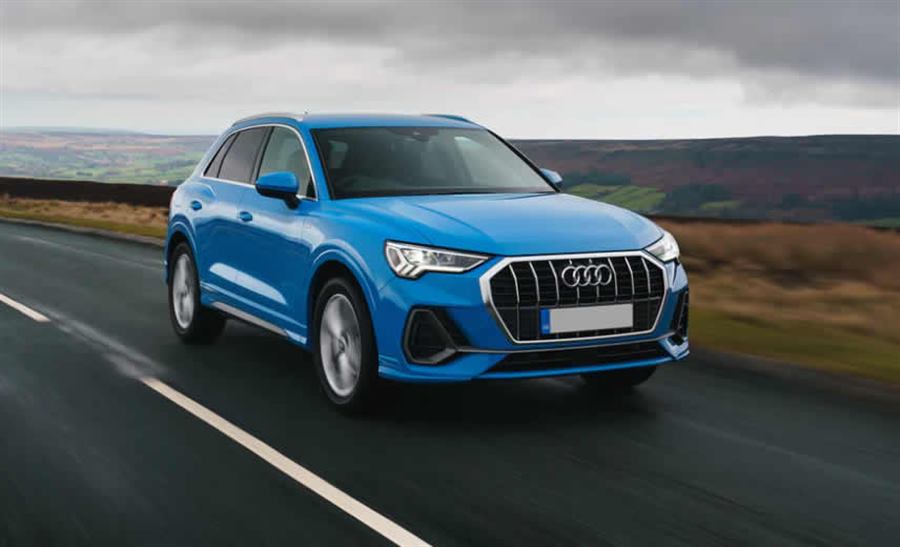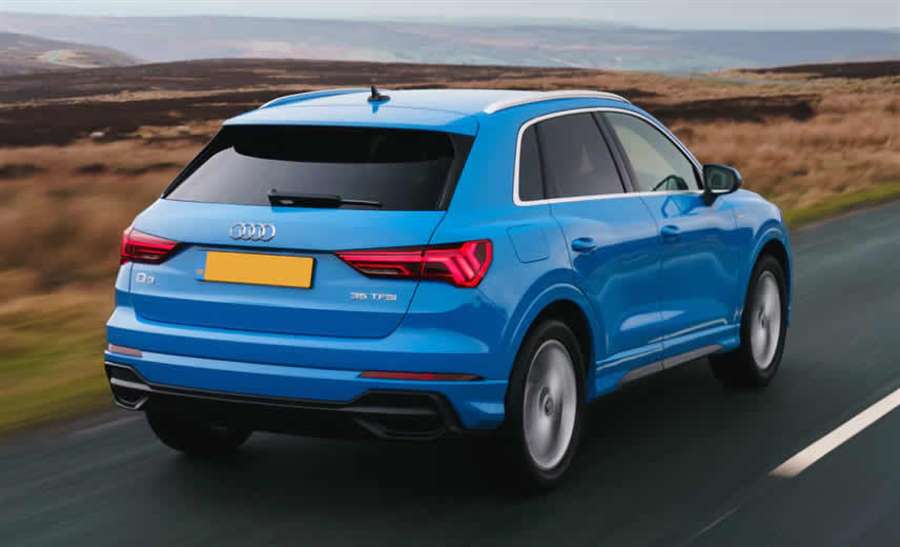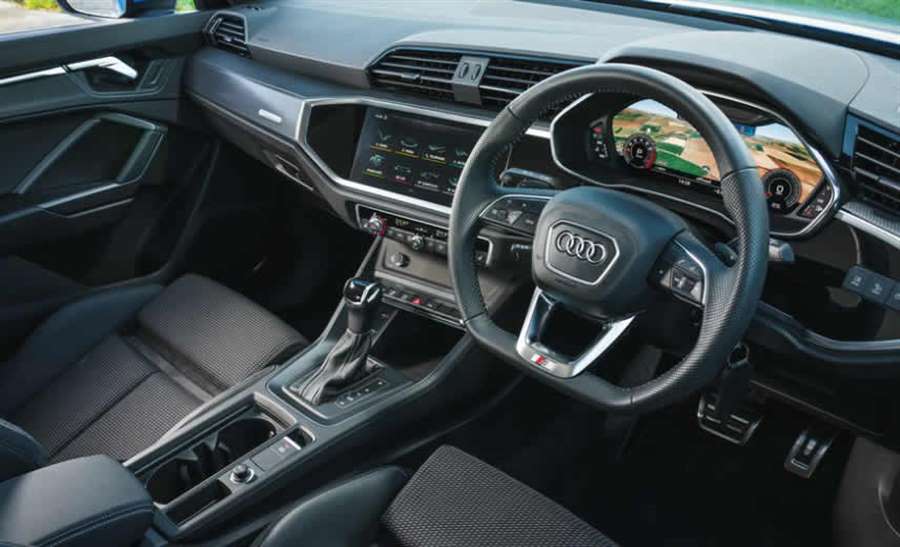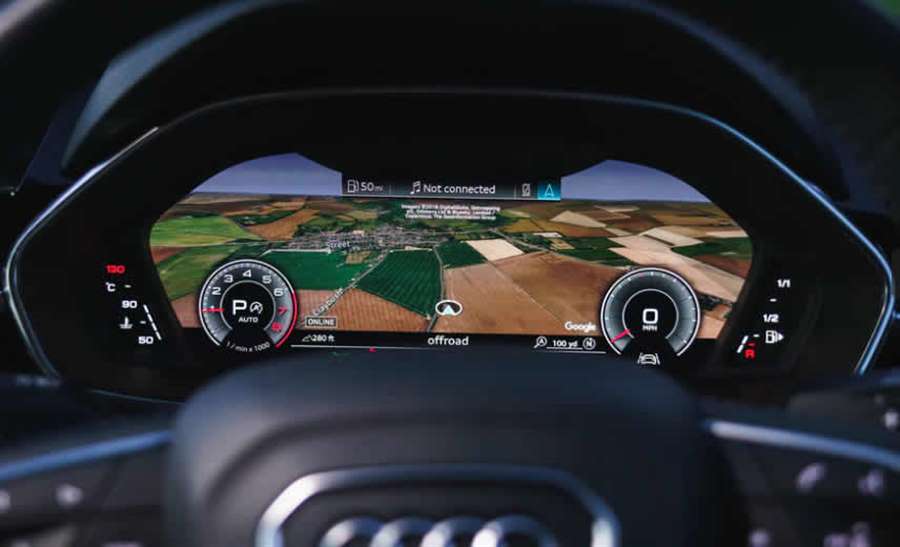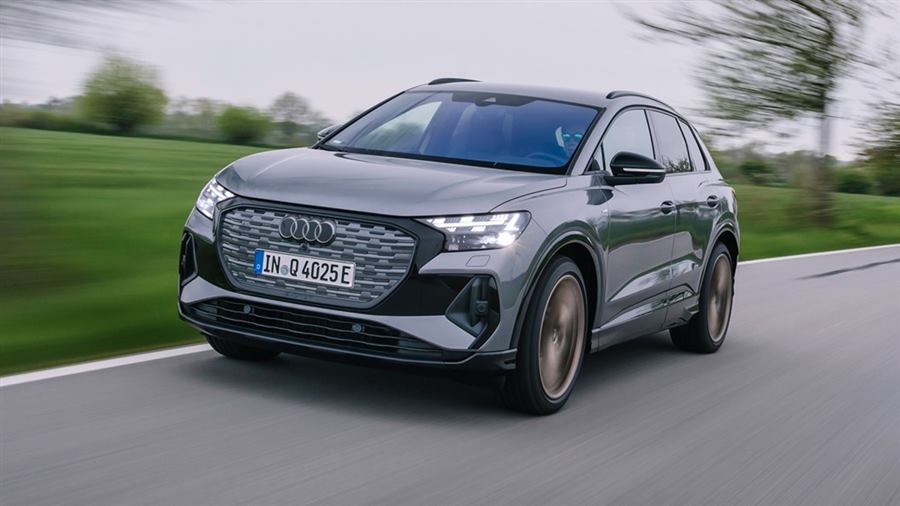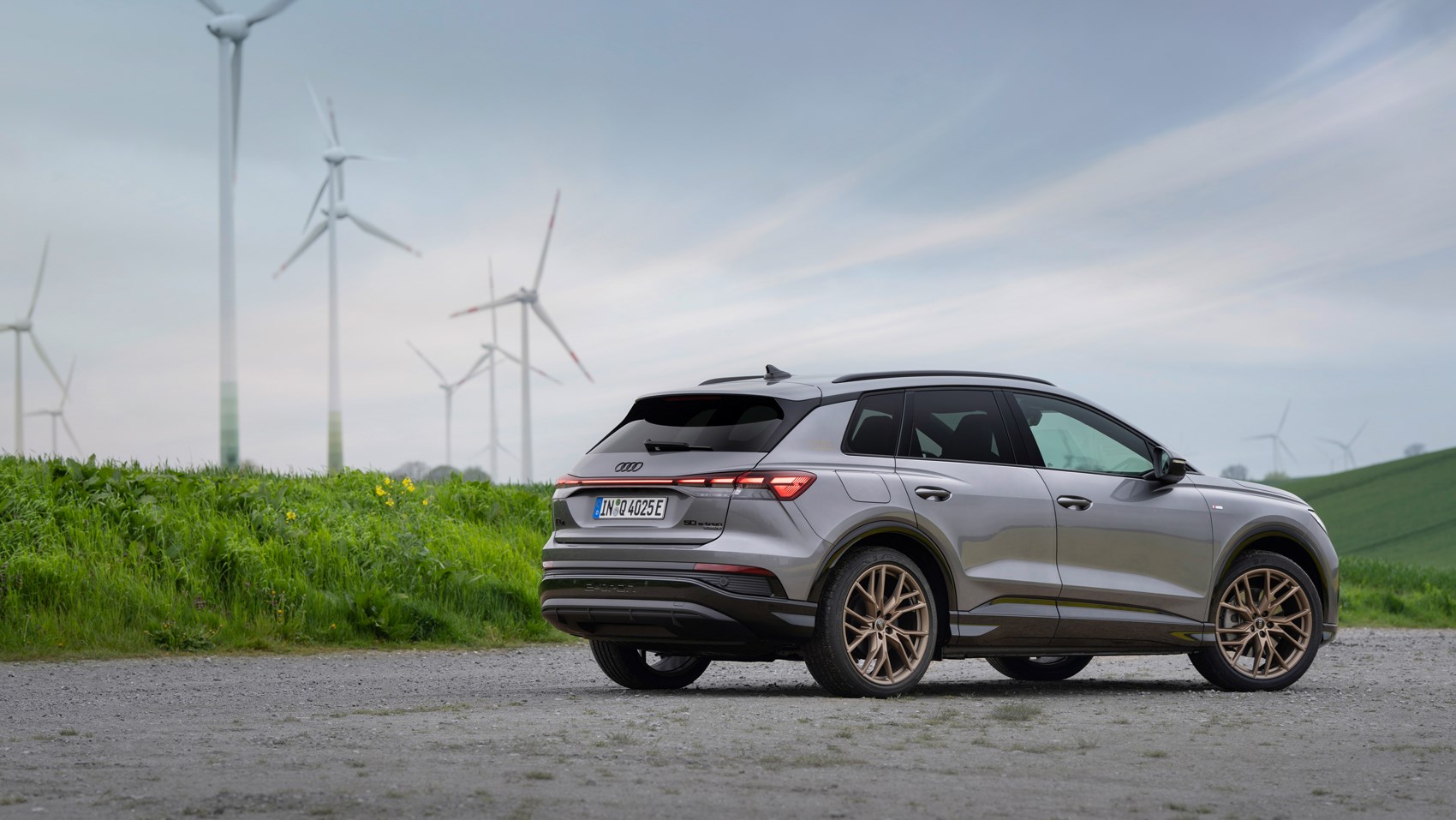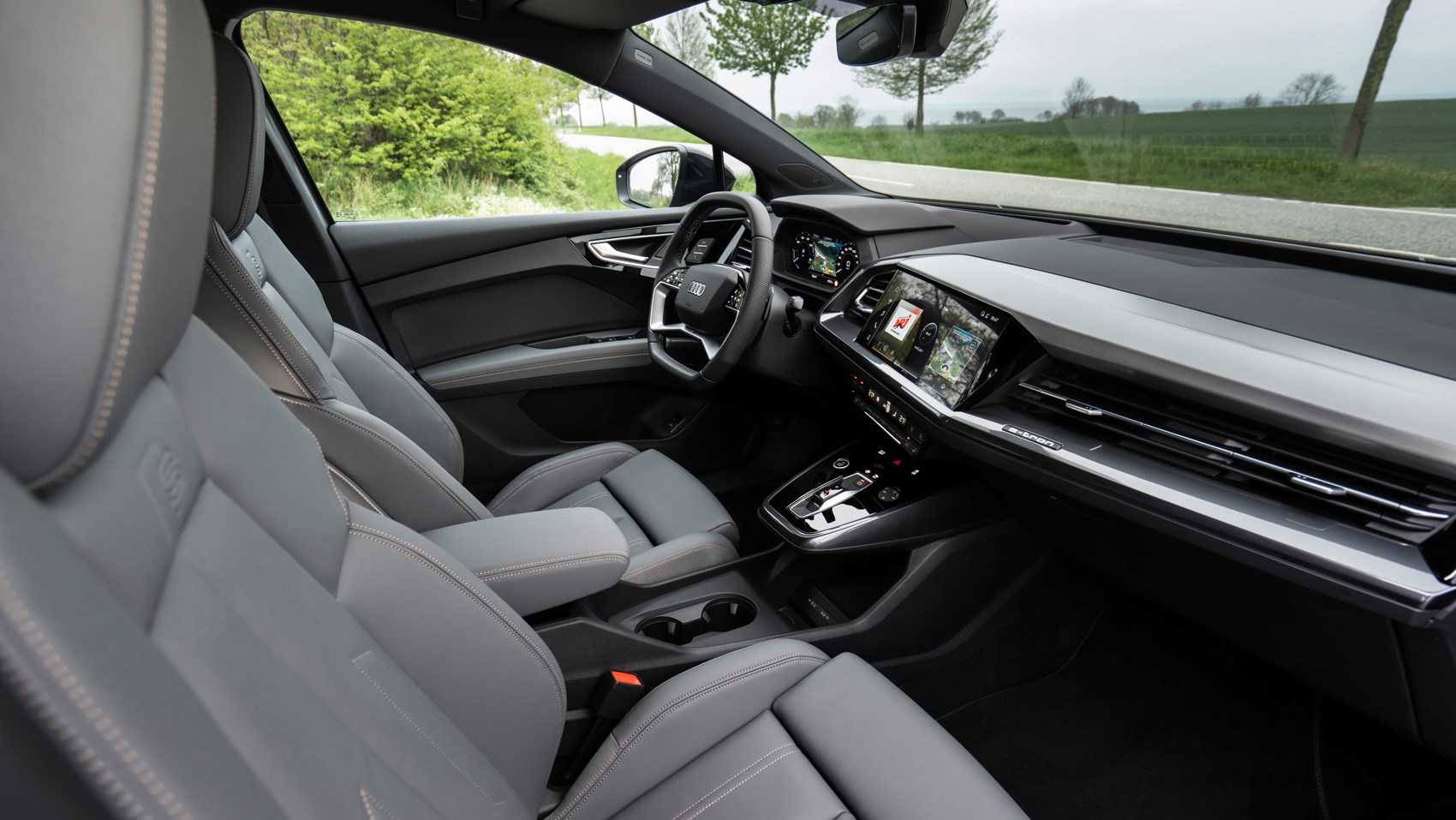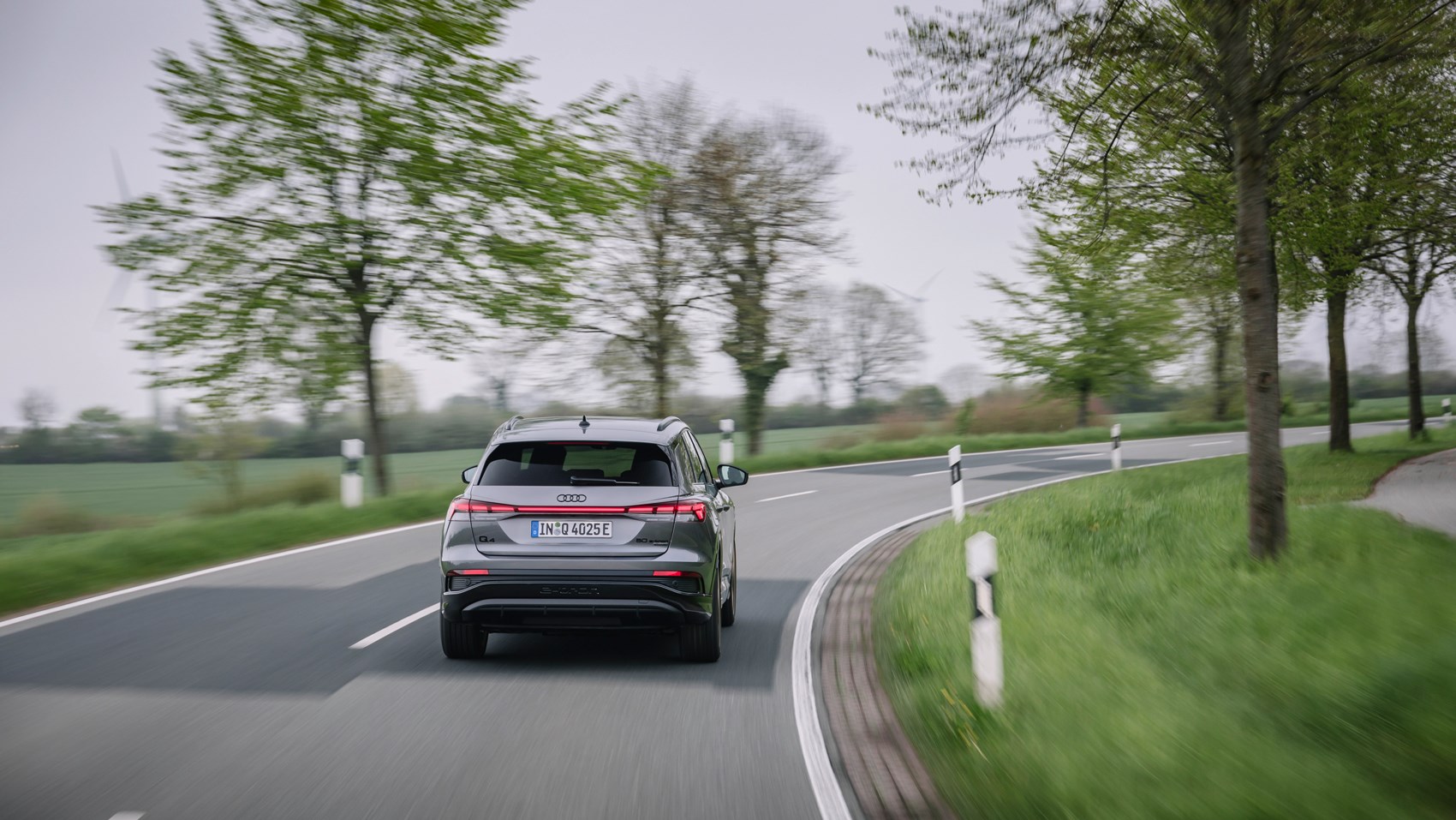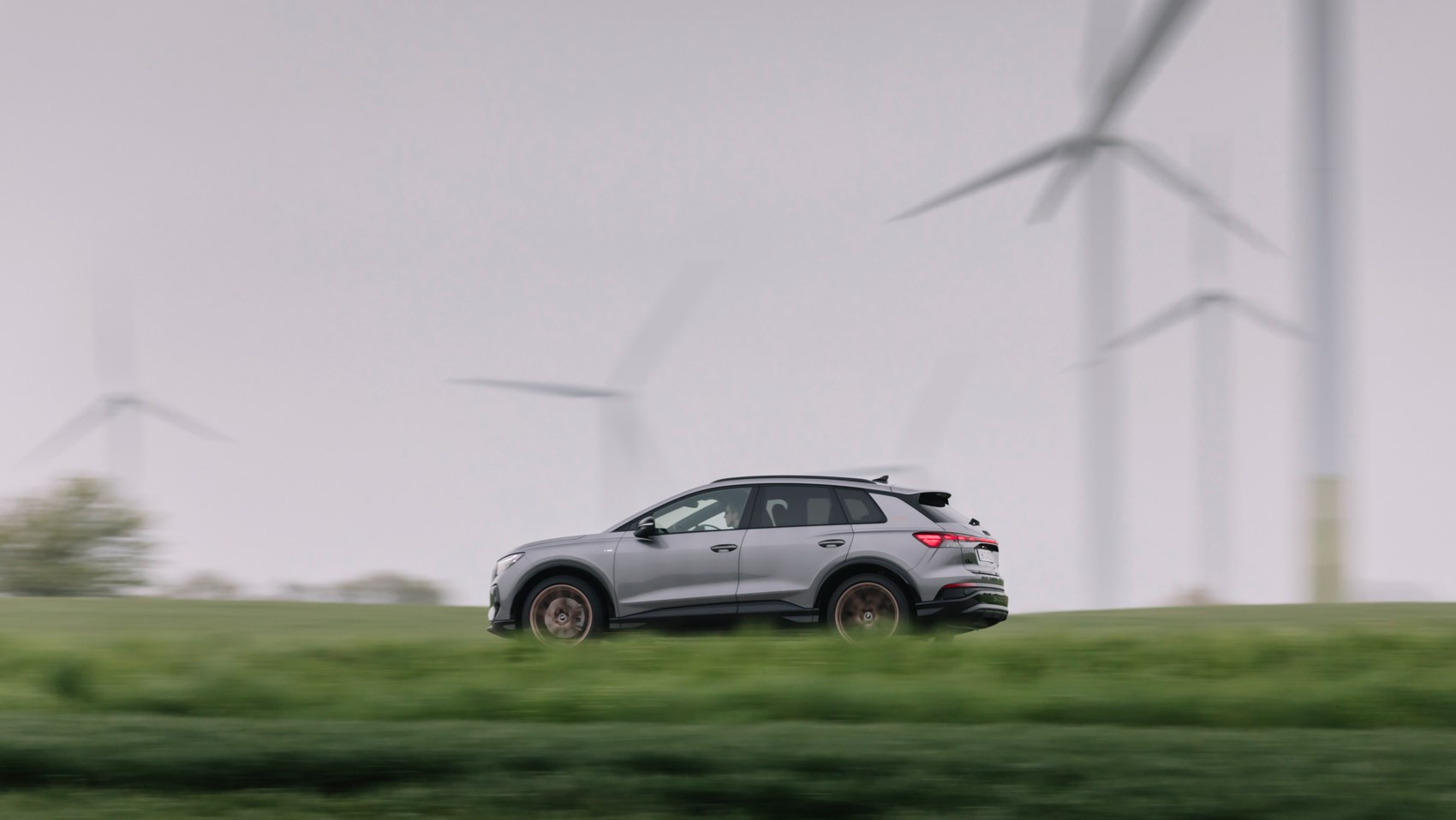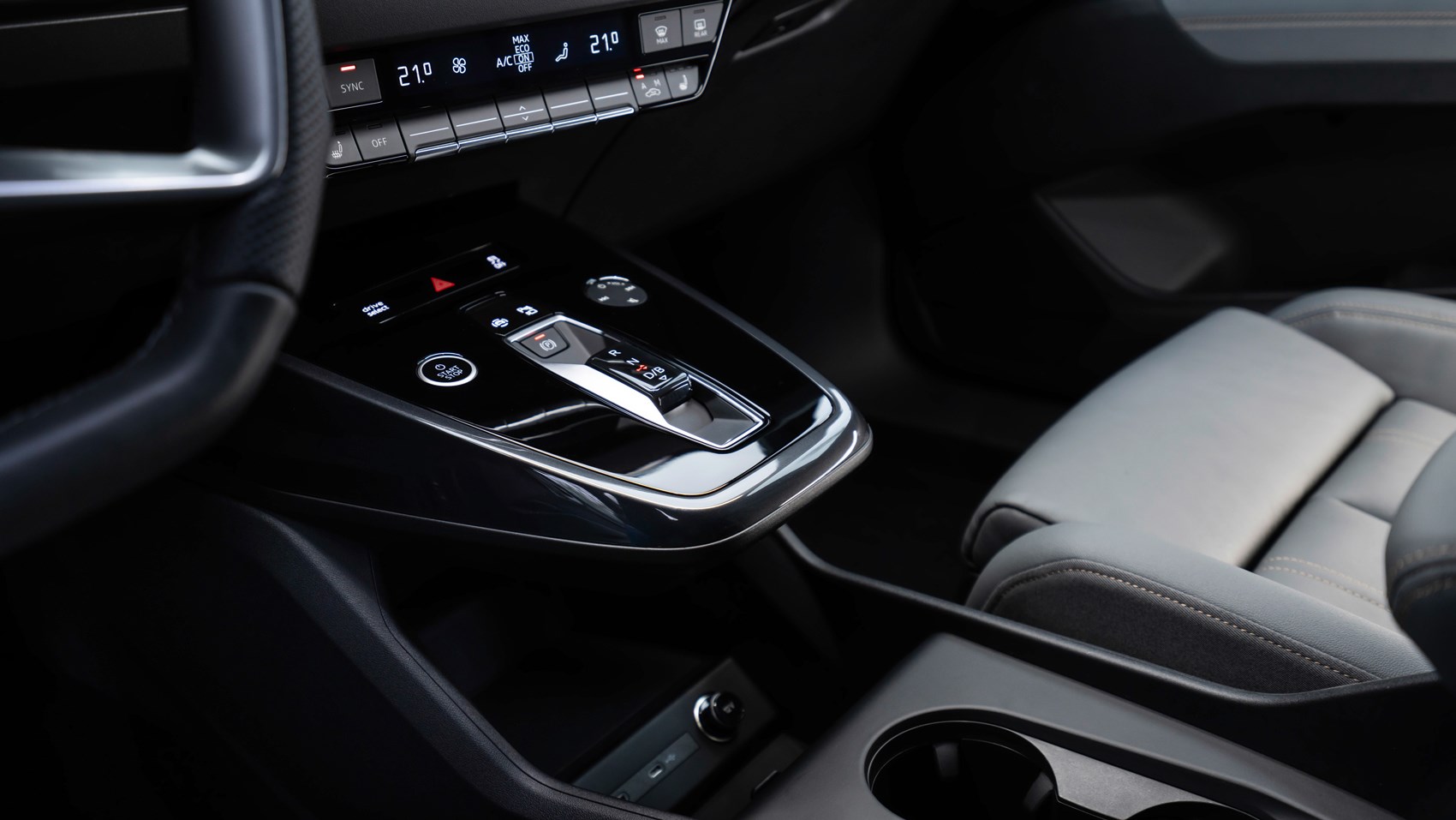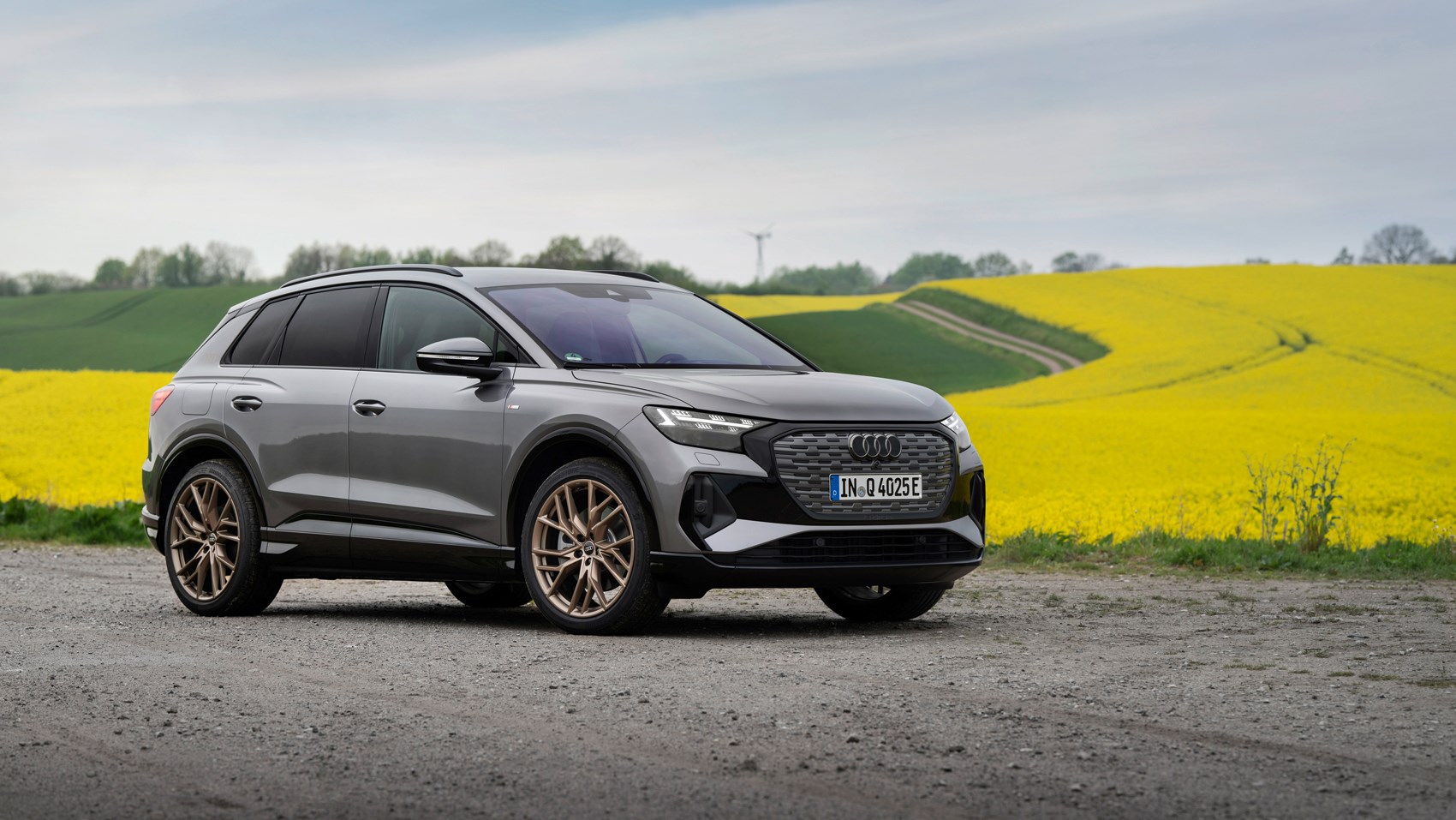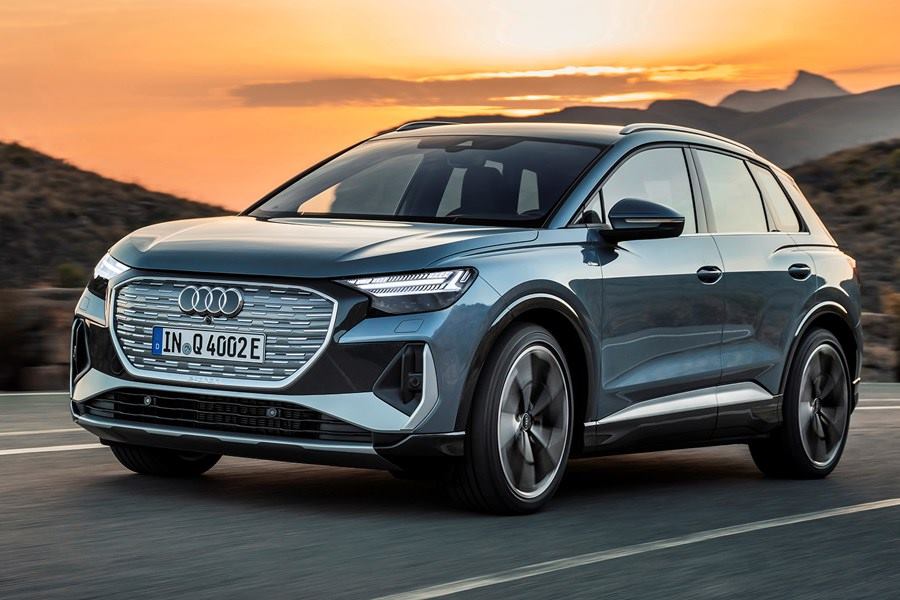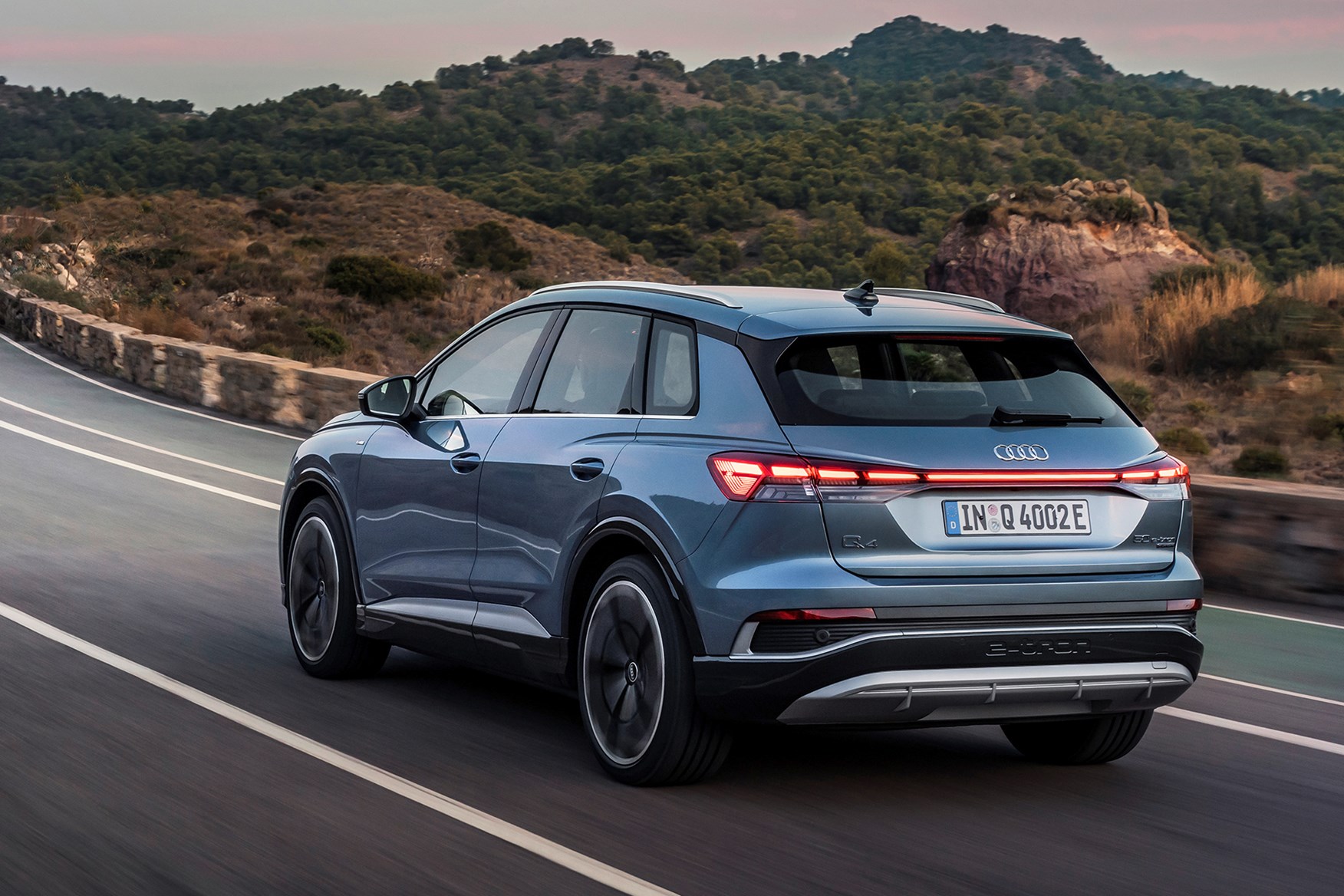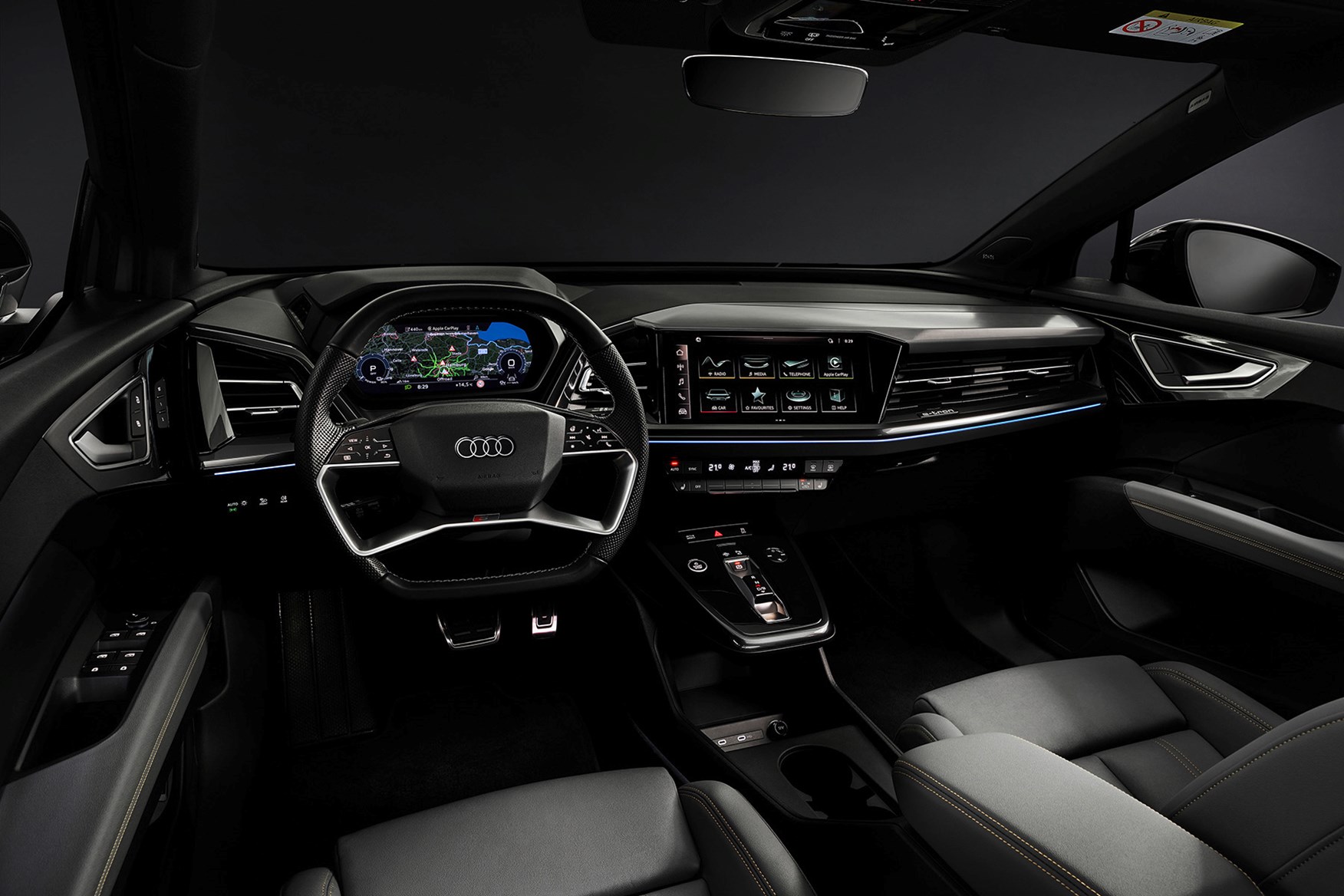"The Audi A4 is a comfortable and economical executive saloon with a stylish, technology-laden interior"
The Audi A4 has been involved in an ongoing battle in the executive saloon class with the BMW 3 Series and Mercedes C-Class for 30 years. Historically, each of this German trio boasted strengths in different areas; the A4 brought an understated design and quattro four-wheel drive, the 3 Series was the driver’s choice, and the C-Class was about sublime comfort and quality. Times have changed, with all three competitors now more equal than ever before, ensuring the latest versions all need to be impressive all-rounders.
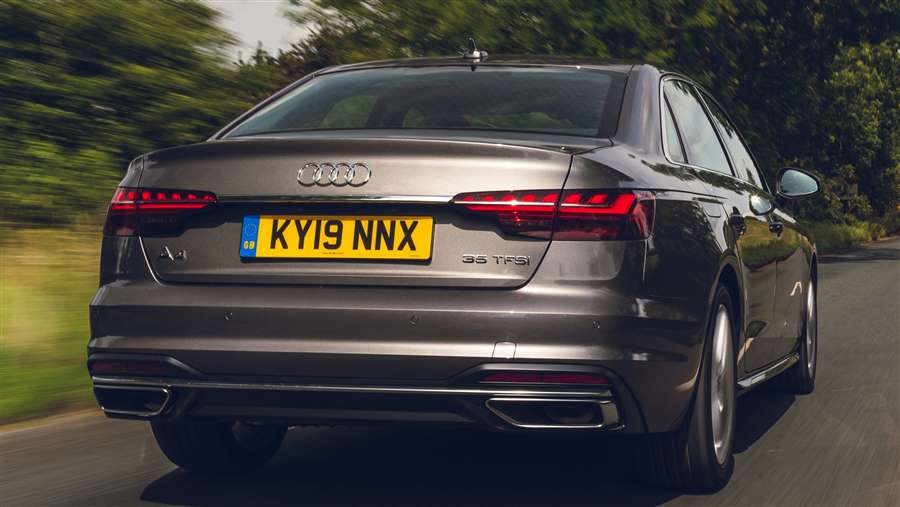
Best executive cars
All three of these executive specials now offer an increasingly similar list of qualities making picking between them more difficult. As well as a direct rivalry with each other, recent years have seen strong offerings from rival manufacturers, with the Alfa Romeo Giulia, Jaguar XE and Lexus IS providing strong competition. This means the Audi A4 can’t afford to rest on its laurels, and the latest model is a spacious, practical and relatively fuel-efficient machine.
A recent significant facelift has seen the A4 evolve again to keep itself in the fight with the new BMW 3 Series and updated Jaguar XE. Its looks have changed quite significantly, with a new nose that's now even more purposeful and striking designs for its front and rear lights. The interior has been given a revamp and mild-hybrid engines ensure lower running costs for company-car drivers.
For enthusiastic drivers, the A4 gets off to a lacklustre start whether you pick a quattro four-wheel drive or a front-wheel drive variant, as it lacks the nimble agility offered by the rear-wheel drive BMW 3 Series. This new model is an improvement over the previous generation, though, with a vastly improved ride quality that is more compliant with the potholed roads of Great Britain, with the optional adaptive suspension allowing you to choose between a soft or firm spring setup. There's no option of air suspension, like in the Mercedes C-Class, though.
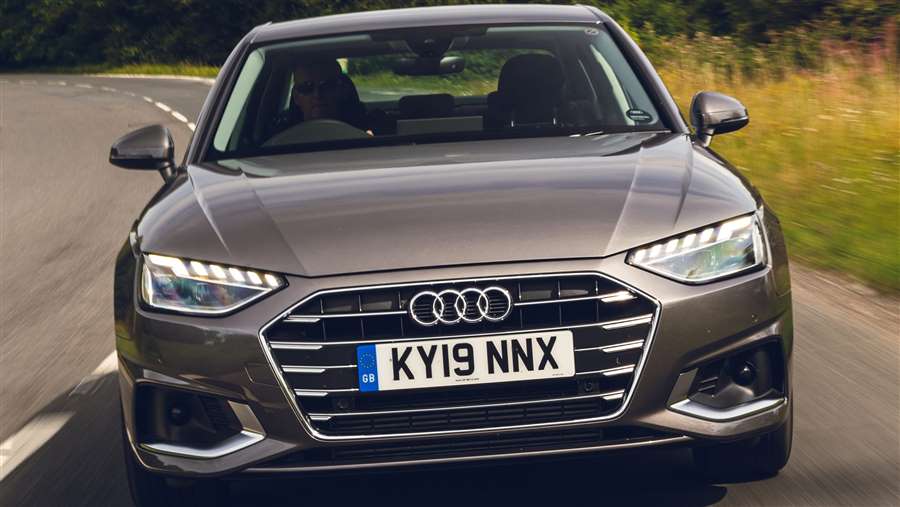
There's a wide range of engines to choose from. Those who cover fewer than 12,000 or so miles a year will be well served by the modern, turbocharged 2.0-litre petrols. Available with either 148bhp, 201bhp or 261bhp, and badged 35, 40 and 45 TFSI respectively, our favourite is the mid-level model, returning up to 40.9mpg despite a swift 0-62mph time of 7.1 seconds.
Those who cover a higher annual mileage might prefer a diesel, and the 161bhp 2.0-litre 35 TDI is a great all-rounder, with up to 58.9mpg claimed, combined with low Benefit-in-Kind (BiK) company-car tax rating. There's also a high-performance Audi S4 saloon, fitted with a 336bhp diesel engine, which we've reviewed separately.
Those who cover a higher annual mileage might prefer a diesel, and the 161bhp 2.0-litre 35 TDI is a great all-rounder, with up to 58.9mpg claimed, combined with low Benefit-in-Kind (BiK) company-car tax rating. There's also a high-performance Audi S4 saloon, fitted with a 336bhp diesel engine, which we've reviewed separately.
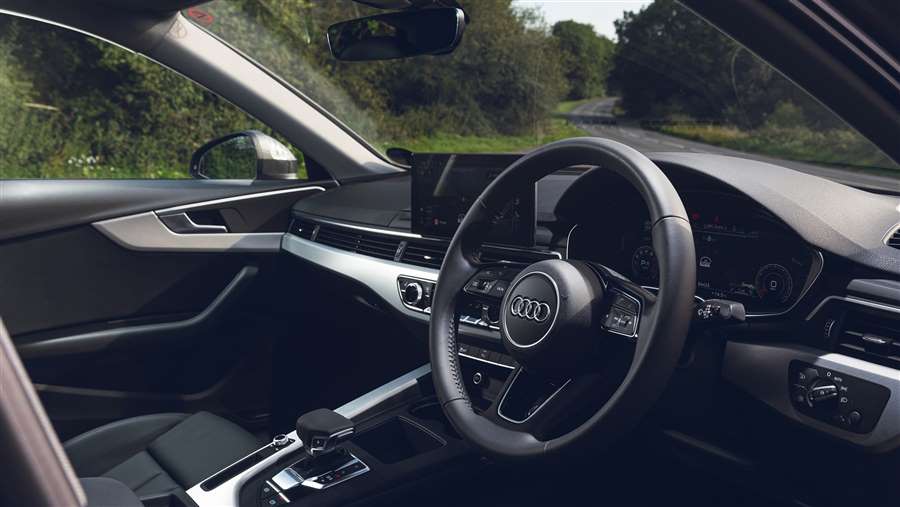
Even the cheapest Technik trim is well equipped, with a 10.1-inch infotainment screen and Audi's Virtual Cockpit fitted as standard. Sport Edition, S line and Black Edition add desirable styling to the mix, while the top Vorsprung grade includes adaptive suspension, LED Matrix headlights, a sunroof and lots of driving assistance kit to make the A4 safer.
The Audi A4 finished 73rd out of the 100 cars ranked in our 2019 Driver Power owner satisfaction survey of cars currently on sale in the UK but didn’t appear in our 2020 list. Euro NCAP awarded the A4 a five-star score in crash-testing.
If you're in the market for a compact executive saloon, then the Audi A4 ticks virtually all the boxes. It's economical, spacious, well built, packed with tech, has a beautifully designed interior and, while rivals such as the BMW 3 Series, Jaguar XE and Alfa Romeo Giulia may be more rewarding to drive, the latest generation A4 is the most competent yet on a twisty road. While there's not a lot to separate most of the models in the A4's class, the Audi is a great all-rounder.
Audi A4 saloon - MPG, running costs & CO2
The greenest Audi A4 model can return over 50mpg
Audi has gone to great lengths to improve the Audi A4's fuel-efficiency figures. It's not as if the old car's CO2 emissions and fuel economy were bad in comparison to rivals – far from it – but Audi has to keep cars like the refreshed BMW 3 Series and hi-tech Jaguar XE at bay in order for the A4 to remain competitive.
Company-car drivers are likely to be unimpressed that there's no plug-in hybrid version of the A4. There are some strong rivals here, including the BMW 330e and Mercedes C 300 e that offer low BiK bands thanks to their low CO2 emissions.
Audi A4 MPG & CO2
Like many compact executive cars, the Audi A4 has a huge range of engines to choose from and mild-hybrid technology has been rolled out to boost fuel-efficiency and help cut CO2 emissions. It works by capturing energy while the car is slowing down and using it to power the car's electrical systems. The most economical engine in the range is the 2.0-litre diesel; the 134bhp ‘30 TDI’ is able to return up to 60.1mpg according to Audi. Even the 161bhp ‘35 TDI’ is capable of up to 58.9mpg in trims with smaller wheels. The A4 now has a reduced engine range to choose from, but all are relatively frugal. The more economical diesels are best for high-mileage driver, but relatively high BiK bands mean the petrol models are often now more appealing for company-car drivers.
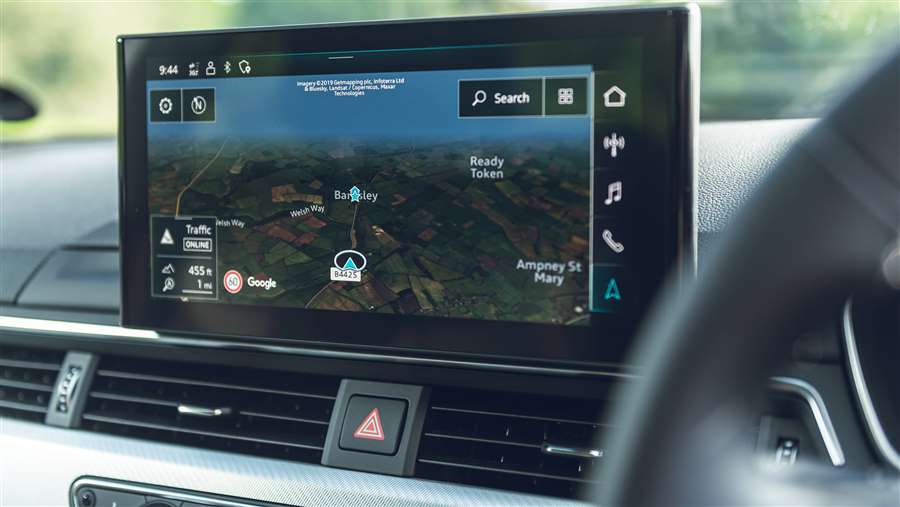
A more powerful, 201bhp version of the 2.0-litre diesel engine is also available with standard quattro all-wheel drive. Badged 40 TDI, it promises fuel economy of up to 54.3mpg. Other engine highlights include a 2.0-litre 35 TFSI petrol with 148bhp, which is capable of up to 46.3mpg and is the least expensive engine in the range to buy.
There are further petrol choices, as you can order an A4 with either 201bhp or 261bhp. While these are very smooth, they're best for low-mileage drivers as fuel economy is up to 44.8mpg and 35.3mpg respectively. They're also only available with more expensive trim levels.
After the first year's CO2-based road tax (generally included in the on-the-road price), all Audi A4s cost £150 a year to tax. Those with a list price (including options) of more than £40,000 are liable for an additional surcharge of £325 a year in years two to six, bringing the annual bill to £475 during that period.
Insurance
The entry-level petrol 35 TFSI sits in group 23, while the 40 TFSI in Sport trim climbs to group 29. The 30 TDI starts from group 22 out of 50, while the range-topping diesel S line 40 TDI quattro is in group 30.
Warranty
Audi's warranty looks a little stingy in the face of its competition; its three-year/60,000-mile cover is pretty standard fare, with BMW and Mercedes providing unlimited-mileage cover over the same time period. The standard warranty can be extended to four years/75,000 miles for around £400 or five years/90,000 miles for just under £1,000.
Servicing
Audi offers fixed service intervals of 9,000 miles or once a year, or flexible servicing that can see drivers cover up to every 19,000 miles or two years for the major between services. Flexible servicing is recommended for drivers with a high annual mileage, while fixed servicing better suits town and city drivers making frequent, short trips. Audi offers owners a range of fixed-price service deals.
Audi A4 saloon - Engines, drive & performance
The Audi A4's handling and performance has been much improved over its predecessor
One of the biggest complaints about the old Audi A4 was its rather numb steering. That car didn't exactly feel great to drive, which was why we recommended the BMW 3 Series or Jaguar XE for more enthusiastic drivers.
The latest generation is a big improvement in that regard – the steering is sharper and offers more feel and feedback, but it's still very light.
Although Audi has made the A4's suspension slightly softer and more comfortable than before, there's very little body lean, so you won't get thrown about inside if you go around a roundabout too enthusiastically. It’s still not the outright driver’s choice, though – the A4 feels a bit characterless next to rivals like the BMW 3 Series, Alfa Romeo Giulia and Jaguar XE.
Selecting the optional adaptive suspension system's Comfort mode improves the ride quality further, although whether it's worth spending the extra cash on depends on how much you value a soft ride. We’d recommend the upgrade, as the standard car is noticeably firmer than many of its rivals, especially over rougher roads. S Line trim versions are firmer again, with sports suspension that lowers the car by 23mm.
As always, Audi offers its ‘quattro’ four-wheel-drive setup on some models in the A4 range. This ensures there's always enough traction, which could be useful in rain-soaked Britain, but the standard front-wheel-drive version should be more than competent enough for most buyers.
You can choose between a six-speed manual transmission, a seven-speed S tronic dual-clutch automatic gearbox with steering column-mounted shift paddles – or a more conventional eight-speed automatic with the more powerful engines. The S tronic is a particularly good gearbox, offering quick shifts in manual mode and smooth changes in auto mode. It's the only option for most of the range, as the 35 TFSI is the only engine where the manual gearbox is offered.
Audi A4 petrol engines
The Audi A4 petrol range has simplified and been thoroughly worked over. A 148bhp 2.0-litre turbocharged engine called 35 TFSI kicks off the range, joined by two higher-powered versions of the same engine - producing either 187bhp or 242bhp, and badged 40 TFSI and 45 TFSI.
All three engines are very smooth and remarkably quiet on the move and the 40 and 45 TFSI feel fairly potent. Audi predicts the 35 TFSI will be the strongest seller in the range, and it has just enough performance to suit the car, without being hugely thrilling on a fun road.
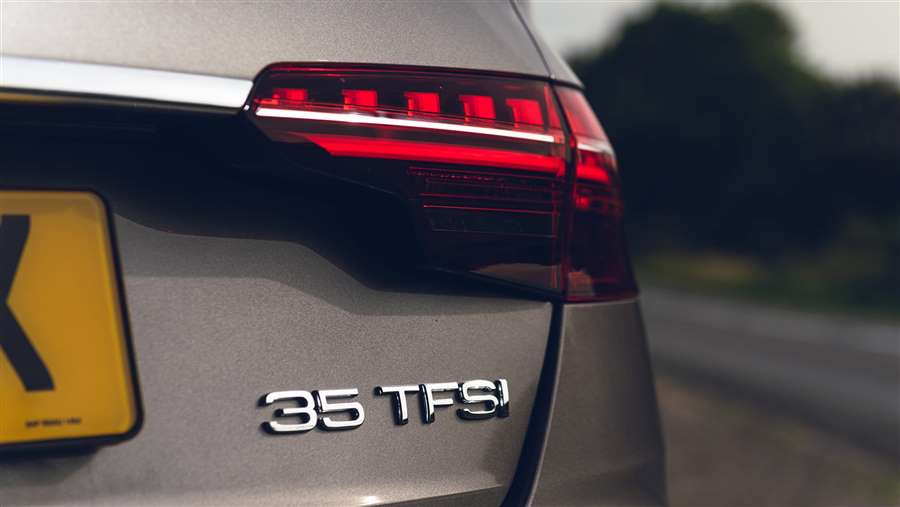
Diesel engines
Three diesel options are now available, all with a capacity of 2.0 litres and fitted with an S tronic dual-clutch automatic gearbox. With either 134bhp, 161bhp or 201bhp, the 2.0-litre engines are badged 30, 35 and 40 TDI respectively and should be powerful enough for most drivers. They boast a smooth power delivery and are quieter than the diesels fitted to the previous A4. For many drivers, the 35 TDI is likely to be the pick of the bunch, offering reassuring performance when overtaking or driving on the motorway. It gets from 0-62mph in 8.2 seconds with front-wheel drive - quattro is only available for the 40 TDI, where it's fitted as standard.
Audi A4 saloon - Interior & comfort
The Audi A4's interior is impeccably built and there's loads of technology on board
The Audi A4's interior is awash with gadgets and technology, featuring equipment and design ideas from other recently revised Audi models like the Audi TT coupe, Audi R8 supercar and Audi Q7 SUV.
The 2019 facelift means the A4 has even more of this technology as standard, with analogue gauges now a thing of the past. Not every move is positive; the touchscreen-only infotainment system isn't as easy to use while driving as the old control wheel.
Audi A4 dashboard
Audi has removed as much clutter from the dashboard as possible in recent years, with the A4 featuring a minimalist layout inside. It also has an incredibly well built interior that just oozes class and sophistication. It's still a more sober design layout you get in the rather flashy Mercedes C-Class, but Audi's penchant for creating classy interiors has been maintained in the A4.
The 'Virtual Cockpit' instrument cluster has been updated and now comes as standard - and it's the best in the business for clarity and ease of use, with all the controls at your fingertips on the steering wheel. The only buttons that remain on the dashboard operate the climate control and essential features. The automatic versions have an aircraft-throttle-like gearlever, which looks smart and doubles as a wrist-rest.
The central vent that's fixed into the dashboard is called an 'air shower'. It's meant to diffuse air gently towards occupants, rather than simply blowing it in your face like traditional air vents.
Audi’s 10.1-inch infotainment system comes as standard, with high-definition graphics and touchscreen operation. After many years, Audi has decided to drop the wheel selector in the centre console, but this feels like a backwards step when driving as it can be tricky to prod the screen on the move. Instead, it's better to use voice commands once on the move.
The built-in sat nav system uses Google Maps and loads with lightning speed, which is partially due to a super-fast processor that gives the most technically advanced computers a run for their money. Overall, it's not quite as user-friendly as the latest BMW iDrive system, but it comes very close.
Equipment
Trim levels are called Technik, Sport Edition, S line, Black Edition and Vorsprung, and even the entry-level version is well appointed. There are 17-inch alloy wheels, LED headlights, heated front seats, three-zone climate control, sat nav, DAB radio and a rear-view camera.
Sport Edition adds bigger wheels and some extra style, which is improved upon again by S line. S line also drops the suspension by 23mm, so be aware it won't ride quite as smoothly - an issue exacerbated by 19-inch wheels. Tinted glass is also added, along with sports seats embossed with the 'S' logo and trimmed in leather and Alcantara.
Based on S line, Black Edition replaces exterior chrome with black trim for a stealthy look. while Vorsprung adds features such as adaptive sport suspension, Matrix LED headlights, a sunroof, driving assistance features and a head-up display.
Options
Options include adaptive cruise control, adaptive dampers, LED 'Matrix' headlights, styling packs and a huge range of accessories. However, they are pricey. A Comfort and Sound Pack bundles features such as keyless entry and a powered boot, a Bang & Olufsen stereo, 360-degree camera view and extended LED lighting around the interior.
Technology
The current A4 is the most advanced yet when it comes to technology. Everything is controlled on a slick touchscreen that sits above the air vents. You can also control various functions through the 'Virtual Cockpit' screen that takes the place of traditional dials in the instrument cluster. It's a 12.3-inch screen that comes as standard and allows you to view maps, media functions and other things like the trip computer in place of the analogue dials of older models.
It's an incredibly slick system and, in combination with the bright central screen, makes using the A4 very easy. A colour head-up display also comes fitted to the Vorsprung trim, which appears to hover in the windscreen, making it easier to check your speed and navigation instructions without being distracted from the road ahead.
There are various USB ports, SD card slots and auxiliary inputs, so you can listen to music in a variety of ways, as well as over Bluetooth, which is very quick to pair with your phone. The A4 can also come with Audi Connect, which allows you to download apps that can show you the weather forecast, petrol prices and even your Twitter feed, plus the car can act as a wi-fi hotspot for up to eight devices.
The A4 also comes with Apple CarPlay and Android Auto, and the switch to a touchscreen makes these interfaces more natural to use than with the old MMI controller.
A large number of A4s serve as company cars, so a responsive and intuitive sat-nav system is a must. Luckily, the A4's system, as with other VW Group systems, is very easy to use and provides clear, easy-to-follow instructions. You can do multi-route planning as well as using the comprehensive point-of-interest search, which also has access to the internet. This gives you contact details for the destination as well as some information from Wikipedia, which is quite useful.
Audi A4 saloon - Practicality & boot space
Boot space is the same as the previous model, but there’s much more interior space in the Audi A4
The Audi A4's interior space is much improved over the previous model, while boot space remains the same. The way the car has been designed means passengers in the front and back now have more room than ever.
Audi A4 interior space & storage
Since the A4 is wider and longer than before, passengers have more room than ever. The rear seats boast 23mm more legroom, which may not sound like much, but it means that people over six feet tall can now sit comfortably in the back. Headroom is impressive, too – much more generous than you'll find in the Jaguar XE. There's also the usual pair of ISOFIX mounting points for child seats.
There's loads of adjustment in both the steering wheel and front seats, so you should find it easy to get into position quickly. There are also some big door bins that can swallow large bottles, but the glovebox and central armrest spaces aren't particularly generous.
Boot space
The A4’s 480-litre boot is identical in size to the BMW 3 Series’ and Mercedes C-Class’. Unsurprisingly for a saloon car, getting larger items into the A4 could be easier, but unlike the C-Class and the 3 Series, the A4 gets folding rear seats as standard.
Stowing them expands the boot volume immensely, and the Audi's seats fold forwards in a versatile 40:20:40 configuration. Like many cars in this class, they don't lie completely flat when dropped, though.
Audi A4 saloon - Reliability & safety
The Audi A4 is safe and modern, but it hasn't all been plain sailing for owners
Audi's famed interiors continue to impress buyers, but issues with flexibility, reliability, running costs and the ride and handling lower its overall score in our Driver Power survey.
Audi A4 reliability
The Audi A4 was rated poorly for reliability in our 2019 Driver Power owner satisfaction survey of cars currently on sale in the UK. Of the owners who responded, 21.0% reported experiencing a problem with their car at least once. The car didn’t appear in our list of the top 75 cars in 2020.
Exterior fit and finish was cited as the most likely problem and while the A4 scored well for its interior, infotainment, comfort and engines, low scores for running costs suggest owners struggle to achieve the official consumption figures and face high maintenance costs. Hopefully the addition of mild-hybrid technology will help the facelifted version meet expectations in this regard.
Audi as a brand finished a fairly disappointing 21st out of the 30 manufacturers rated in 2020, although this is above BMW and Mercedes. Owners praised the build quality of the company's cars but ownership costs and a lowly reliability ranking were less impressive.
Safety
One of the A4's strong points is a range of advanced technology to help keep you safe while driving. The car's adaptive cruise control is so clever that the A4 can almost drive itself in stop-start traffic. The car will also keep itself in lane on the motorway, as long as you periodically place your hands on the steering wheel. Also available on higher-spec cars are Audi's 'Matrix' LED headlights, which dim automatically when on full beam to avoid dazzling the drivers of oncoming cars.
All of this equipment contributed to the A4 getting the full five-star safety rating from independent testing body Euro NCAP, including a 90% score for adult occupant protection, 87% for child protection and 75% for pedestrian protection.
Source: carbuyer.co.uk

